“My guitar is not a thing,” Joan Jett famously stated. “It is an extension of myself. It is who I am.” This powerful statement encapsulates the profound connection between a guitarist and their instrument, especially in rock music. The guitar, with its primal and expressive nature, has become synonymous with rock, capable of conveying a spectrum of emotions and musical ideas. While anyone can strum a few chords, mastering the guitar in rock is a lifelong journey of exploration and innovation. Delving into what defines a great rock guitarist is a fascinating endeavor, celebrating those who have shaped the genre with their unique skills and vision.
In 2011, Rolling Stone initially published a list of the 100 Greatest Guitarists, curated by a panel of seasoned musicians. Now, Rolling Stone editors and writers have expanded this list to 250, aiming to showcase the vast landscape of guitar evolution, especially within rock and its related genres.
Rock guitarists often attain iconic status, rivaling even the lead singers of their bands. Mythic figures like Jimmy Page, Brian May, and Eddie Van Halen represent just one facet of the guitar’s rich narrative. This expanded list seeks to illustrate the guitar’s expansive journey, from early pioneers to contemporary innovators. Spanning across generations, from folk icon Elizabeth Cotten (born in 1893) to indie-rock prodigy Lindsey Jordan (born in 1999), the list encompasses a wide array of genres. While deeply rooted in rock, it also acknowledges jazz, reggae, country, folk, blues, punk, metal, disco, funk, and more, reflecting the diverse influences that have shaped rock guitar playing. It features both unparalleled virtuosos like Pat Metheny, Yvette Young, and Steve Vai, and raw, primal players such as Johnny Ramone and Poison Ivy of the Cramps. Rock luminaries like Prince, Joni Mitchell, and Neil Young are included alongside influential behind-the-scenes figures such as Memphis soul maestro Teenie Hodges and smooth-rock virtuoso Larry Carlton.
Recognizing the collaborative nature of rock music, the list also includes dynamic duos who achieved greatness together, such as Kim and Kelley Deal of the Breeders, Adrian Smith and Dave Murray of Iron Maiden, and other synergistic pairings. The primary criterion for inclusion remains being a six-string guitar player, focusing on the instrument that has defined rock music.
In compiling this list, a conscious decision was made to prioritize raw power over technical finesse, emotional expression over polished perfection, and groundbreaking innovation over mere refinement. Artists who channeled their guitar skills into crafting exceptional songs and albums that redefined the rock landscape were favored over those who merely displayed impressive technique.
As modern blues-rock visionary Gary Clark Jr. articulated, “I don’t know if I want to get too far off the path — I don’t want to get lost in the forest — but I like to wander out a bit and adventure.” This adventurous spirit, this willingness to push boundaries, is what truly defines the Best Rock Guitar Players.
Andy Summers
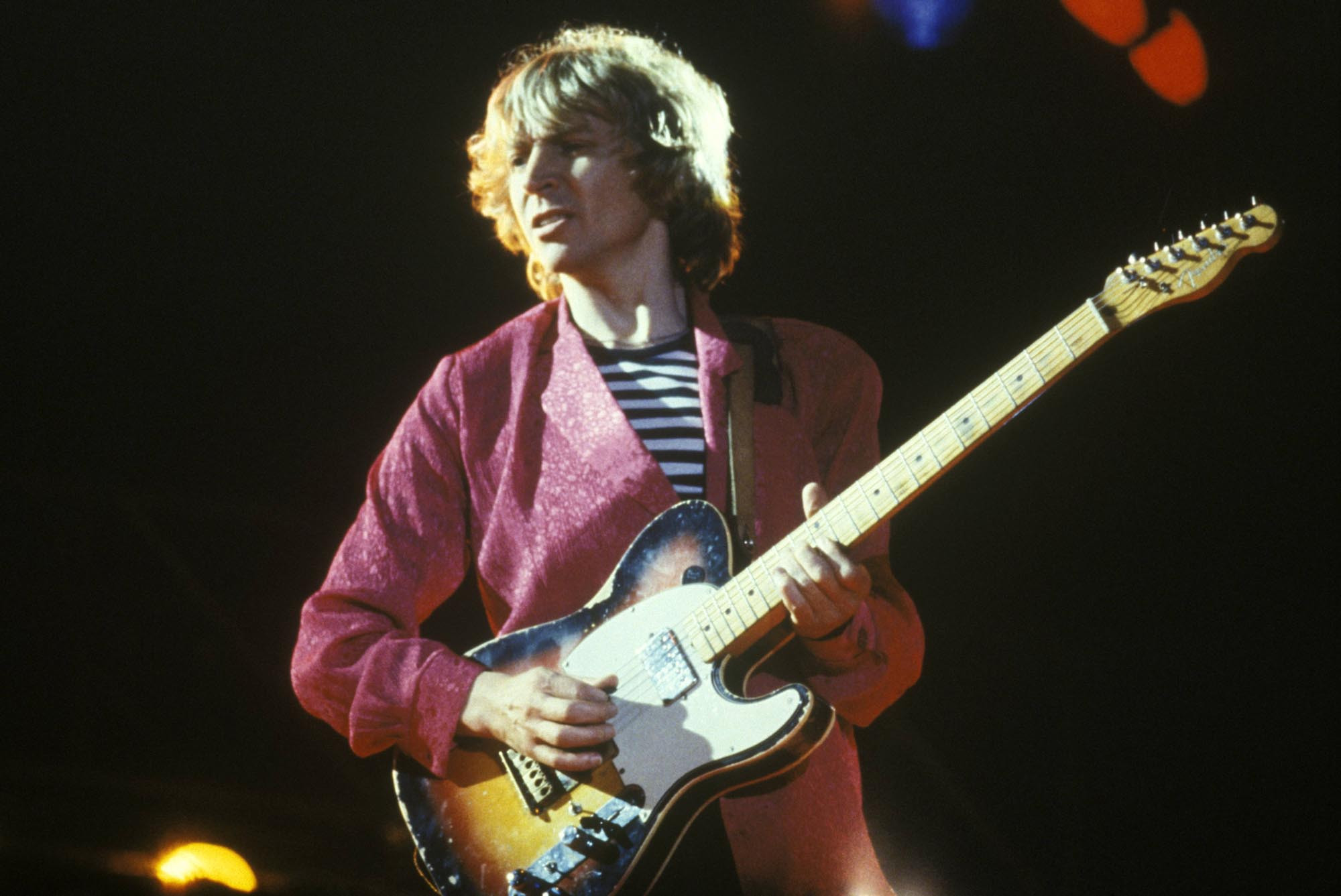 Andy Summers of The Police performing live, playing Fender Telecaster guitar
Andy Summers of The Police performing live, playing Fender Telecaster guitar
Image Credit: Graham Wiltshire/Redferns/Getty Images
The Police emerged as a groundbreaking power trio, largely due to Andy Summers’ innovative guitar work. Evolving rapidly from punk roots, Summers masterfully blended jazz chords and reggae rhythms into a high-energy rock and roll sound. His playing was remarkably economical, characterized by sharp, clipped notes and dub-influenced washes of sound, creating ample space for Sting’s vocals and Stewart Copeland’s drumming. Alex Lifeson of Rush aptly noted, “His tone and style were just absolutely perfect — he left space around everything. And he can handle anything from beautiful acoustic playing to jazz to hybrid kinds of stuff.” Summers’ ability to fuse genres and create a distinctive, atmospheric sound makes him a standout rock guitarist.
Key Tracks: “Message in a Bottle,” “Every Breath You Take”
Brittany Howard
 Brittany Howard of Alabama Shakes, soulful rock guitar player
Brittany Howard of Alabama Shakes, soulful rock guitar player
Image Credit: Sacha Lecca for Rolling Stone
From her beginnings with the garage-roots band Alabama Shakes, Brittany Howard’s guitar playing has consistently been a raw, organic, and wonderfully spontaneous complement to her powerful vocals and soulful songwriting. Her rhythmic sensibility is remarkably elastic, evident in the dynamic interplay between her rugged guitar lines and Heath Fogg’s lead guitar work on tracks like “Don’t Wanna Fight” (2015). Howard further showcased her rock versatility with her side project Thunderbitch, embracing a more direct rock and roll approach. Her 2019 solo album, Jaime, served as a compelling platform for her expansive musicianship, ranging from the funky, James Brown-esque rhythms of “History Repeats” to the dense, molten fuzz textures on “Presence.” Howard’s fearless approach to genre-bending and her raw, emotive guitar style solidify her place among the best rock guitar players.
Key Tracks: “History Repeats,” “Presence”
Robby Krieger
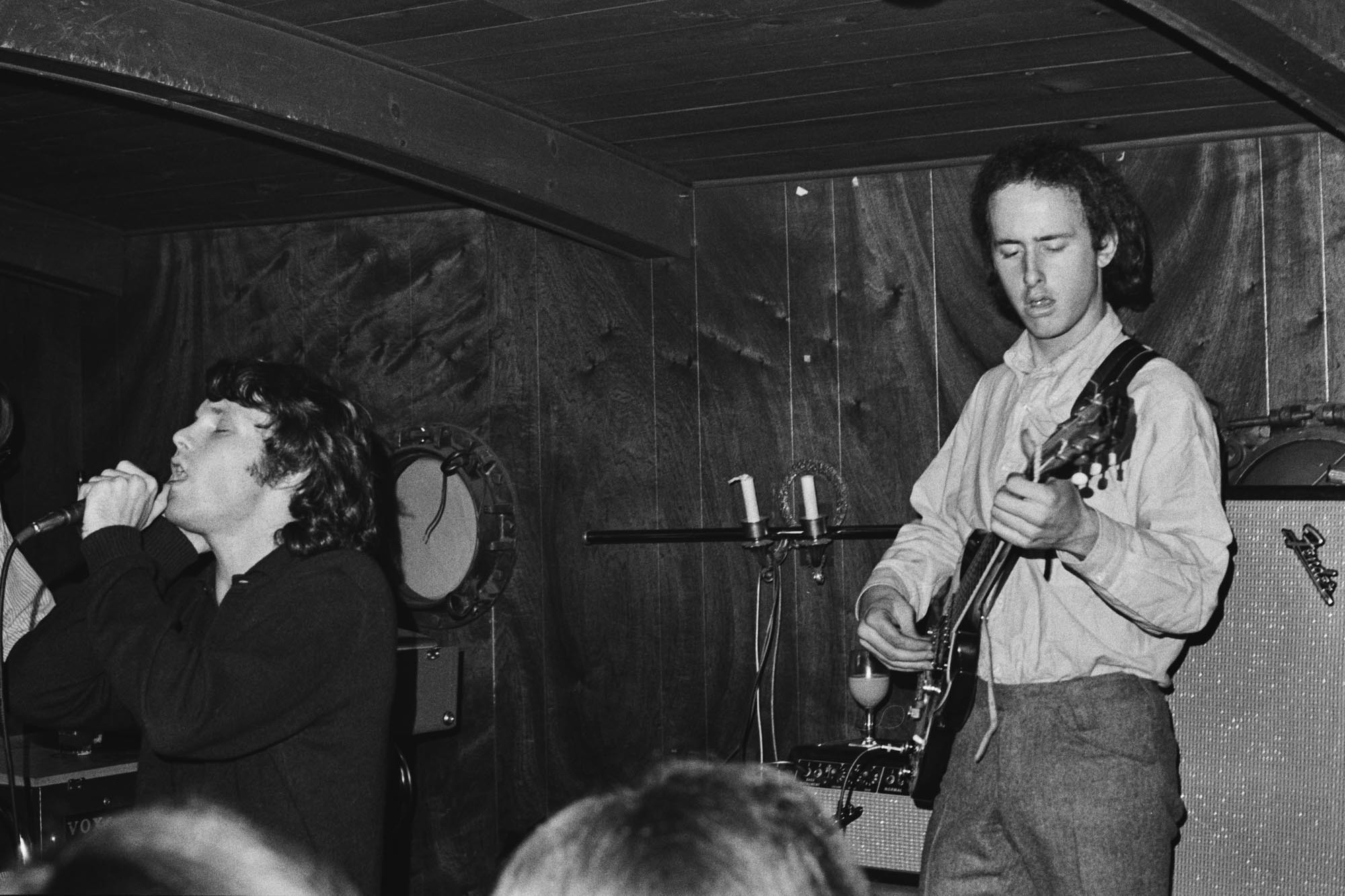 Robby Krieger of The Doors performing in 1966, innovative rock guitarist
Robby Krieger of The Doors performing in 1966, innovative rock guitarist
Image Credit: Don Paulsen/Michael Ochs Archives/Getty Images
Influenced by flamenco and jazz, Robby Krieger transcended conventional rock guitar playing at a time when blues remained the dominant influence. As the guitarist for The Doors, Krieger possessed the improvisational skill to follow Jim Morrison’s unpredictable musical explorations. He penned some of their most iconic hits, including “Light My Fire,” and adeptly filled the sonic space in their unique keyboard-drums-guitar lineup. “Not having a bass player … made me play more bass notes to fill out the bottom,” he explained. “Not having a rhythm player also made me play differently, to fill out the sound. I always felt like three players simultaneously.” Krieger’s ability to blend diverse influences and adapt his playing within The Doors’ unconventional instrumentation highlights his ingenuity as a rock guitarist.
Key Tracks: “Riders on the Storm,” “Roadhouse Blues”
Ricky Wilson
 Ricky Wilson of The B-52s performing live in 1978, inventive New Wave guitarist
Ricky Wilson of The B-52s performing live in 1978, inventive New Wave guitarist
Image Credit: Tom Hill/WireImage
In the high-energy live performances of the B-52s, Ricky Wilson often appeared as a quiet presence amidst the flamboyant antics of Fred Schneider and the captivating stage personas of Kate Pierson and Cindy Wilson. However, his distinctive guitar style—a blend of down-home chicken scratch, angular post-punk, rockabilly twang, and surf rock—became a defining element of the New Wave era. On B-52s classics like “52 Girls,” “Strobe Light,” and “Private Idaho,” Wilson’s inventive approach shone brightly. He frequently used only four or five strings on his blue Mosrite guitar and experimented with unconventional tunings to achieve a unique, minimalist sound. “I just tune the strings till I hear something I like,” he once remarked. With his untimely passing in 1985, the indie-rock scene lost a truly original and unassuming innovator.
Key Tracks: “52 Girls,” “Mesopotamia”
Paul Simon
 Paul Simon playing guitar onstage in 1980, folk-rock guitar innovator
Paul Simon playing guitar onstage in 1980, folk-rock guitar innovator
Image Credit: Paul Natkin/Getty Images
Paul Simon, renowned for his lyrical brilliance, also expresses himself profoundly through his guitar. Rooted in early doo-wop and rock & roll, Simon immersed himself in the folk revival of the mid-Sixties, even traveling to England to study acoustic guitar mastery with Bert Jansch. He has consistently absorbed new musical influences, as evident in “Dazzling Blue” from his album So Beautiful or So What. “All that folk fingerpicking is what I did with Simon and Garfunkel, but [here] it’s on top of this rhythm with Indian musicians playing in 12/8.” Even in his 80s, Simon’s guitar dexterity remains remarkable, as showcased in his 2023 album Seven Psalms. His ability to blend folk sensibilities with diverse global rhythms solidifies his place as a versatile and enduring rock-influenced guitarist.
Key Tracks: “Dazzling Blue,” “Kathy’s Song”
Leslie West
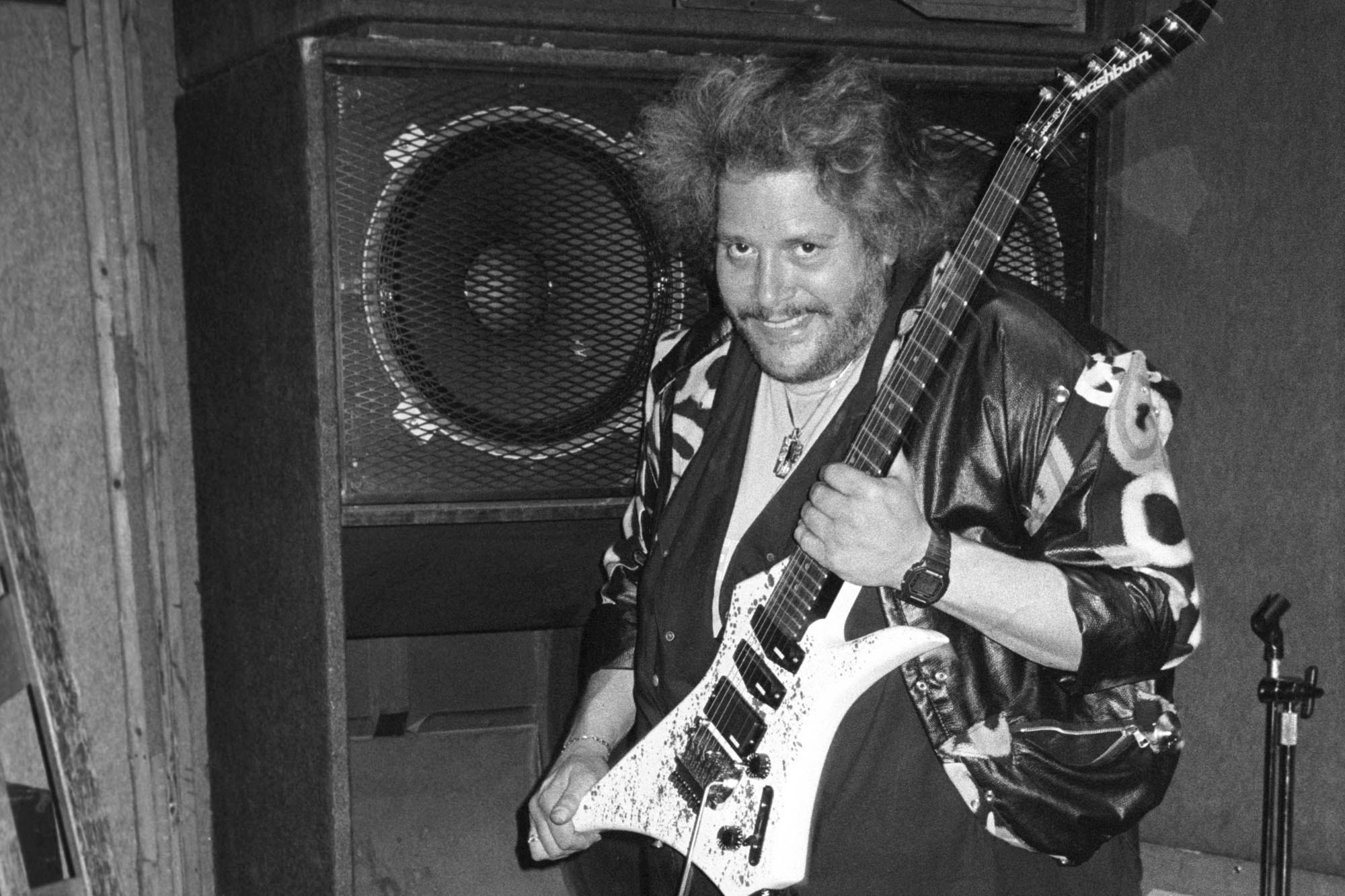 Leslie West of Mountain performing live, heavy rock guitar pioneer
Leslie West of Mountain performing live, heavy rock guitar pioneer
Image Credit: Erica Echenberg/Redferns/Getty Images
Leslie West (born Leslie Weinstein) first gained attention in mid-Sixties garage rock with the Vagrants’ powerful rendition of Otis Redding’s “Respect.” By 1969, West became the driving force behind the Cream-esque quartet Mountain, injecting a heavy dose of blues-rock into the era. On iconic tracks like the 1970 hit “Mississippi Queen,” West delivered raw, blues-infused guitar lines with deceptive ease, amplified by a wall of distorted, overdriven amp tones. Dave Davies of the Kinks noted, “The riffs were incredible. He could play flashy, intricate phrases. But he wasn’t a look-at-me guy. He played with feel.” West’s impactful riffs and emotionally charged playing established him as a foundational figure in heavy rock guitar.
Key Tracks: “Mississippi Queen,” “Nantucket Sleighride (To Owen Coffin)”
Edilio Paredes
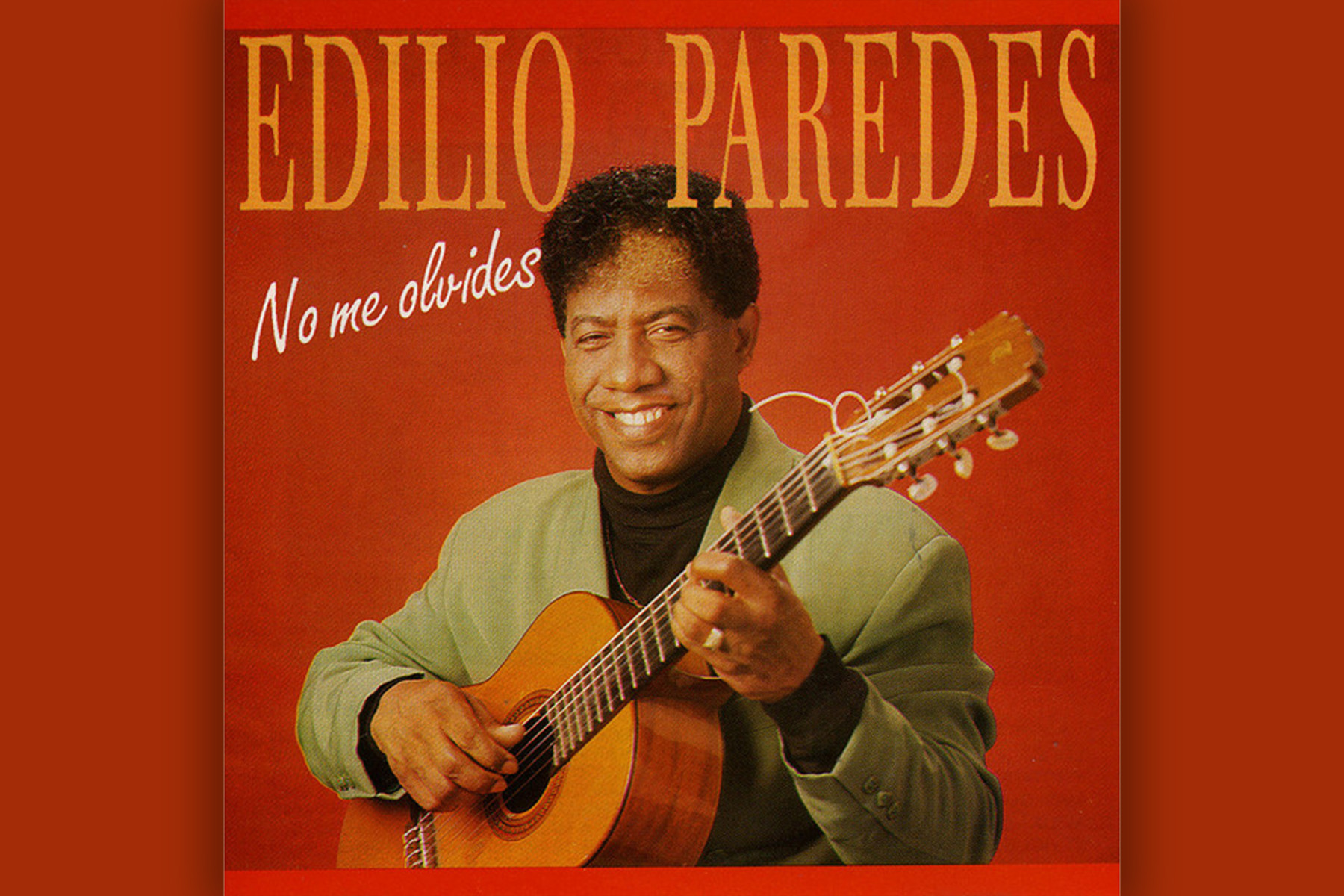 Edilio Paredes, master of Bachata guitar
Edilio Paredes, master of Bachata guitar
Image Credit: Rolling Stone
While primarily known for Bachata, Edilio Paredes’ influence on guitar extends into genres that have touched rock music. Credited with shaping the sonic identity of bachata, Paredes crafted the genre’s signature poignant, spiraling guitar lines, which resonate with the themes of lost love. A self-taught prodigy, he was instrumental in transitioning bachata from bolero campesino to the contemporary Afro-Caribbean genre that gained global recognition in the Nineties. Paredes’ extensive discography as a session musician from the 1960s to 1980s speaks volumes. His appearance on the acclaimed 2011 album The Bachata Legends further solidified his legacy as a master guitarist whose style, though not strictly rock, demonstrates the wide spectrum of guitar artistry.
Key Tracks: “No Me Olvides,” “Bendita Nena”
Aaron Dessner and Bryce Dessner
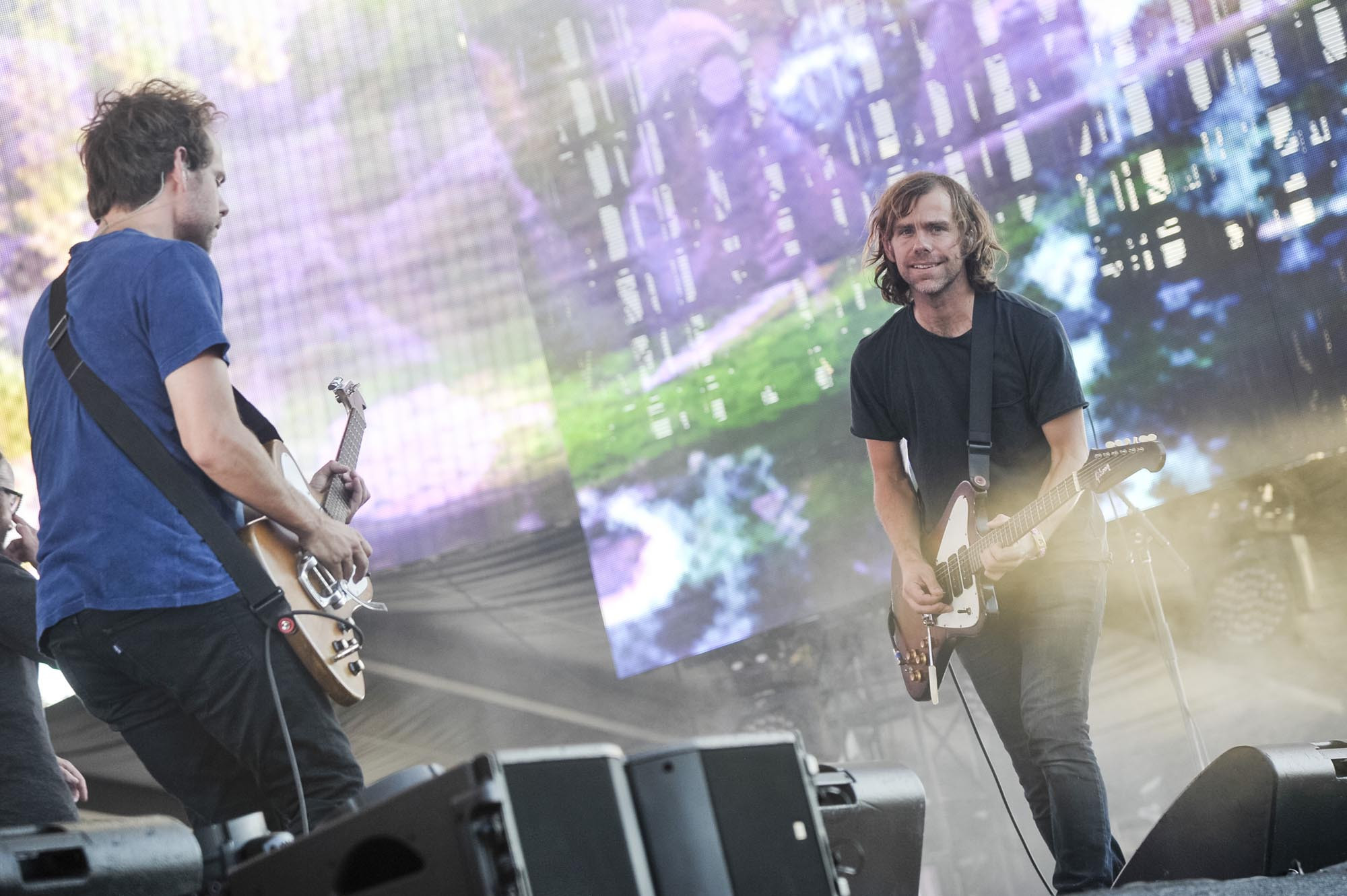 Aaron and Bryce Dessner of The National performing live, innovative twin guitar rock duo
Aaron and Bryce Dessner of The National performing live, innovative twin guitar rock duo
Image Credit: Kris Connor/FilmMagic
The National stands out in rock music, largely due to the virtuosic twin-guitar synergy of twin brothers Aaron and Bryce Dessner. Bryce Dessner’s collaborations extend to luminaries like Steve Reich and Jonny Greenwood, while Aaron Dessner has become Taylor Swift’s key collaborator on albums like Folklore and Evermore, adding a Jerry Garcia-esque twang to tracks like “Cowboy Like Me.” The Dessner brothers’ guitar work ranges from electric intensity, as in “Terrible Love,” to intimate folk beauty, like “I Need My Girl.” They also curated the acclaimed 2016 Grateful Dead tribute album Day of the Dead, further highlighting their versatility and deep understanding of rock traditions and innovations. Their combined talents make them a unique and powerful force in contemporary rock guitar.
Key Tracks: “Mr. November,” “Bloodbuzz Ohio,” “The System Only Dreams in Total Darkness”
Lindsey Jordan
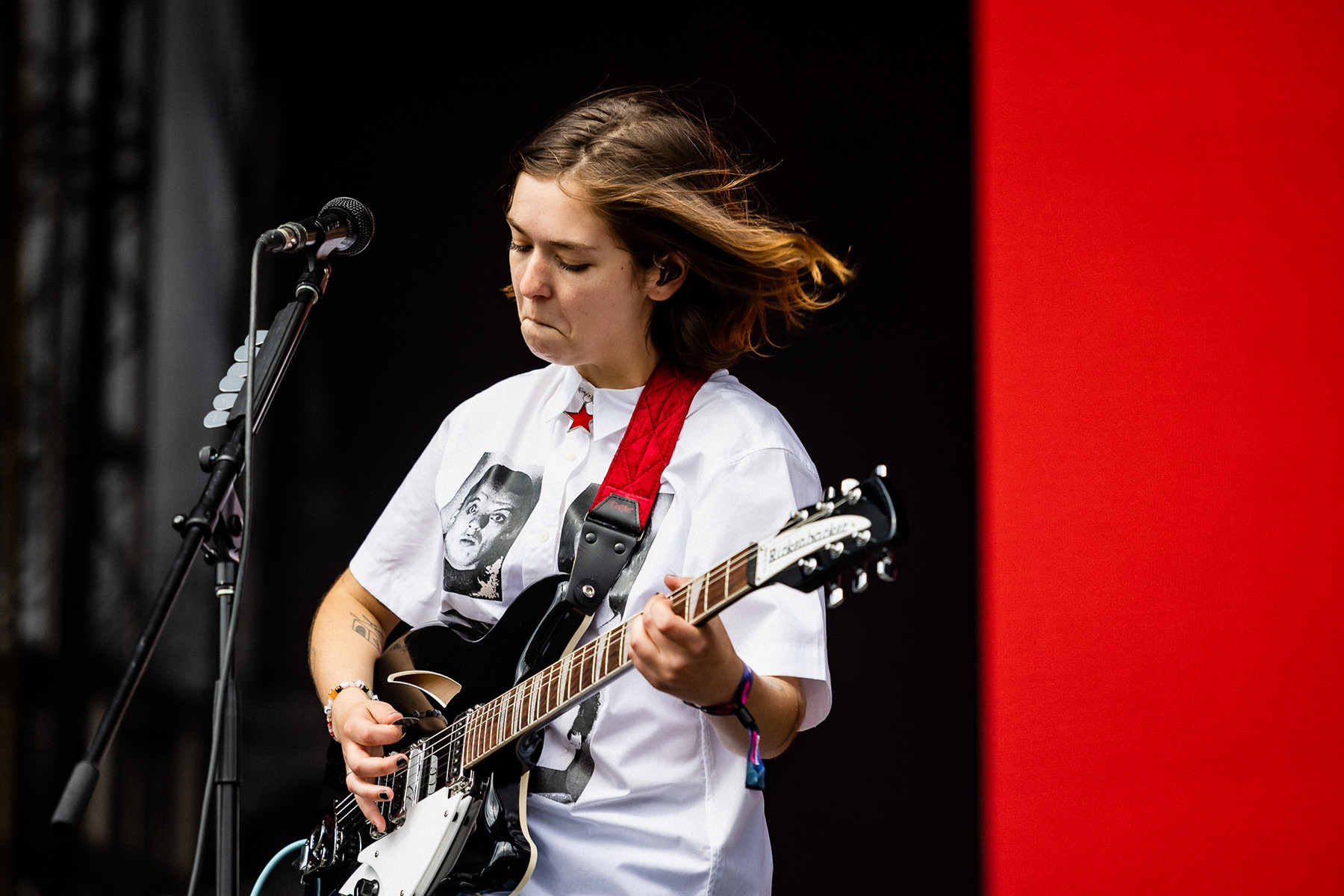 Lindsey Jordan of Snail Mail performing live, Gen Z indie rock guitar hero
Lindsey Jordan of Snail Mail performing live, Gen Z indie rock guitar hero
Image Credit: Griffin Lotz for Rolling Stone
Lindsey Jordan, a Gen Z guitar prodigy known as Snail Mail, learned from Mary Timony, an inventive guitarist from Helium and Wild Flag. With her debut album Lush in 2018 at just 18, Jordan seemed to have fully absorbed the indie-rock guitar canon. She is both a casual virtuoso and a serious shredder, seamlessly transitioning from strummed, tense passages to explosive solos, and moving between Liz Phair’s lo-fi coolness and Sonic Youth’s expansive soundscapes. “I like to play really balls out,” she told Rolling Stone in 2018. “That’s what it means to be onstage with integrity.” Jordan’s dynamic range and passionate performance style mark her as a leading voice in the new generation of rock guitarists.
Key Tracks: “Heat Wave,” “Pristine”
Keith Urban
 Keith Urban performing live in 2001, country rock guitar virtuoso
Keith Urban performing live in 2001, country rock guitar virtuoso
Image Credit: Frank Micelotta/Getty Images
While known in country music, Keith Urban’s guitar prowess transcends genre boundaries, appealing to rock sensibilities with his effortless style. His riffs, rhythms, and solos seem to emerge organically, yet consistently elevate each song. Unassuming in his virtuosity, every note he plays feels purposeful. Tracks like “Highway Don’t Care” and “Blue Ain’t Your Color” exemplify his studio finesse. However, Urban truly shines onstage, delivering guitar heroics that rival rock’s greatest. His collaborations range from the Rolling Stones to Nile Rodgers. “I love that people want to hear the guitar,” Urban told Rolling Stone in 2015, “but I just think about the song … whatever the song seems to want.” Urban’s dedication to songcraft and his ability to deliver electrifying live guitar performances make him a standout in the broader landscape of guitarists influenced by rock.
Key Tracks: “Highway Don’t Care,” “Blue Ain’t Your Color”
Erin Smith
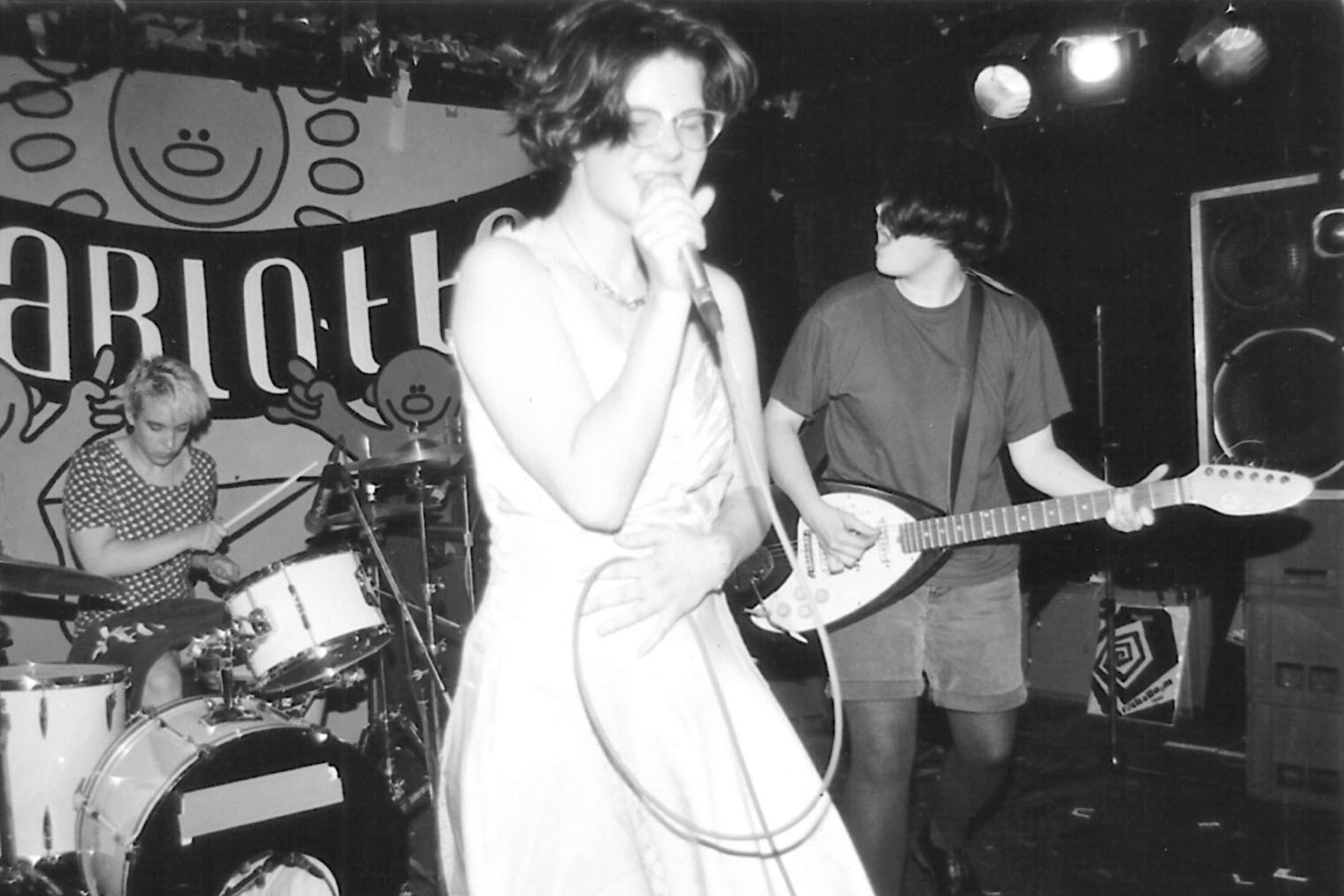 Erin Smith of Bratmobile performing, riot grrrl punk rock guitarist
Erin Smith of Bratmobile performing, riot grrrl punk rock guitarist
Image Credit: © Greg Neate/neatephotos.com/flickr CC BY 2.0
Erin Smith of Bratmobile, a pioneering riot grrrl band, began playing along to Beat Happening records, a band known for its primitive, DIY ethos. “That was in ’87, and not only did I see women could play music, but I could see that just you could do it yourself,” she told the Museum of Pop Culture. “I could never be [Duran Duran’s] Andy Taylor. And I realized that was OK.” Smith’s style, developed with singer Allison Wolfe and drummer Molly Neuman, fused melodic surf-rock bass lines with raw garage-rock chords. This combination propelled Bratmobile’s 1993 debut, Pottymouth, into a seminal punk record of the Nineties. Smith’s embodiment of DIY punk spirit and her raw, energetic guitar style make her a significant figure in rock history.
Key Tracks: “Love Thing,” “P.R.D.C.T.”
Duane Eddy
 Duane Eddy posing in 1958, rock and roll guitar pioneer
Duane Eddy posing in 1958, rock and roll guitar pioneer
Image Credit: PoPsie Randolph/Michael Ochs Archives/Getty Images
If there was any lingering doubt in the late 1950s about the guitar’s dominance in rock & roll, Duane Eddy definitively settled it. His 1958 single “Rebel Rouser,” with its country twang and tremolo-laden riffs, became an anthem of the era. “Chet Atkins used vibrato in a selective way — Duane Eddy used it to thrash the music,” noted Dave Davies of the Kinks. Eddy’s hits, such as “Forty Miles of Bad Road” and “Peter Gunn,” profoundly influenced surf music and guitarists like Jeff Beck and George Harrison. Eddy’s pioneering use of tremolo and his instrumental rock hits cemented the guitar as the defining instrument of rock and roll.
Key Tracks: “Rebel Rouser,” “Peter Gunn”
Doug Gillard
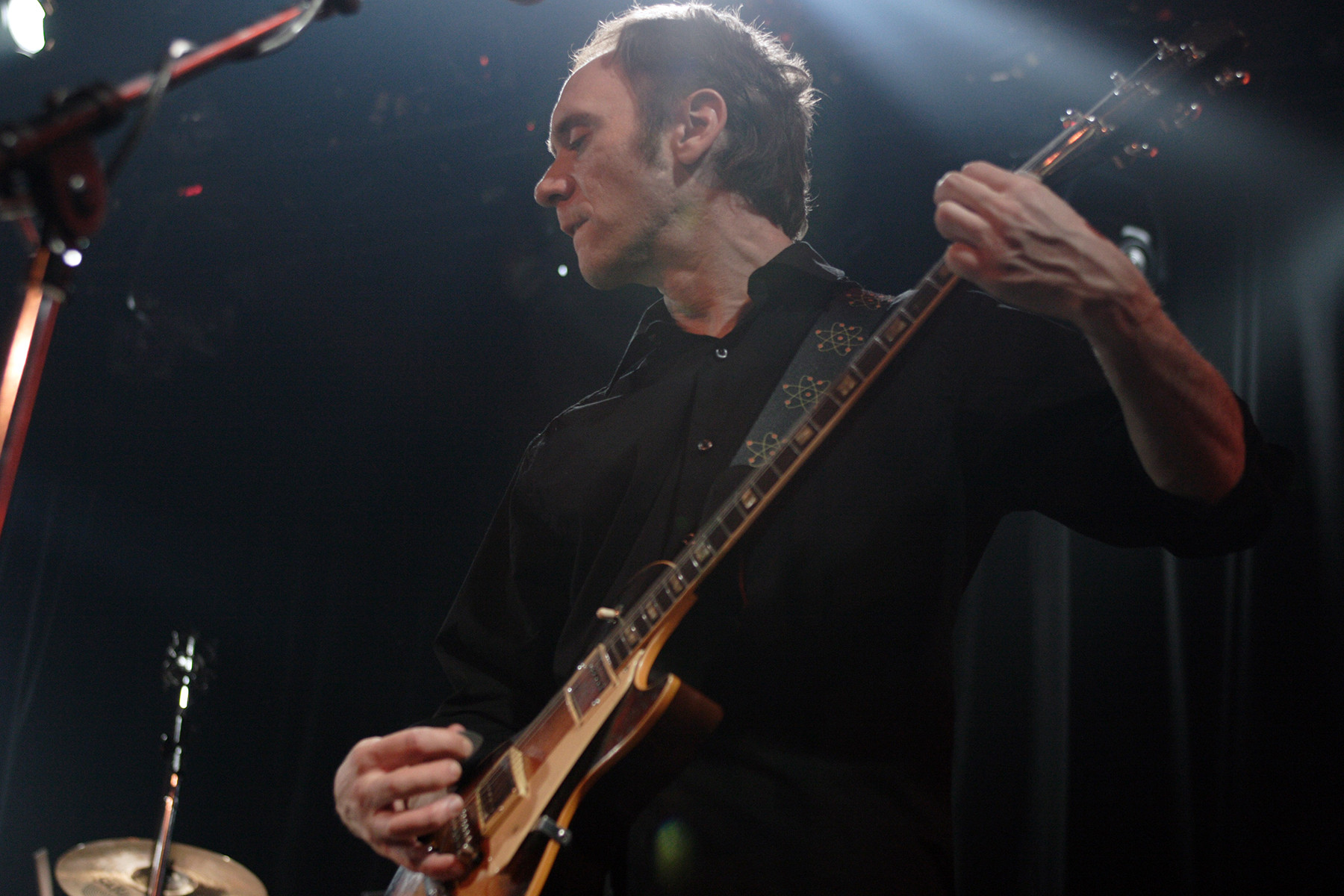 Doug Gillard of Guided By Voices performing live, indie rock guitar innovator
Doug Gillard of Guided By Voices performing live, indie rock guitar innovator
Image Credit: Matt Carmichael/Getty Images
In Guided By Voices, the Ohio indie-rock institution, Robert Pollard is the eccentric genius, while Doug Gillard serves as the band’s musical heart. He perfectly complements Pollard, transforming his abstract lyrics and experimental sounds into cohesive rock and roll, often at an astonishing pace of multiple albums per year. “I know his usual shapes and drones — or can pretty much decipher what they are if it’s a new shape — and replicate them on the rhythm parts on the records for the most part,” Gillard once said. “But also, I have some freedom to transform them.” Gillard’s ability to structure Pollard’s experimental ideas into solid rock songs and his prolific output mark him as a key figure in indie rock guitar.
Key Tracks: “I Am a Tree,” “Mr. Child”
Jennifer Batten
Image Credit: Catherine McGann/Getty Images
Jennifer Batten rose to prominence as the electrifying guitarist on Michael Jackson’s record-breaking tours. This role demanded her to master funk, soul, metal, and even Eddie Van Halen’s “Beat It” solo nightly. Her debut solo album, Above Below and Beyond (1992), showcased her range, featuring covers of Rimsky-Korsakov’s “Flight of the Bumble Bee,” Jackson’s “Wanna Be Startin’ Somethin’,” and John Coltrane’s “Giant Steps,” all reimagined for electric guitar with her signature whammy bar techniques and finger-tapping. Batten later toured and recorded with Jeff Beck, proving herself as one of the few guitarists capable of matching his virtuosity. Her diverse skill set and ability to conquer various genres within a rock framework make her a standout guitarist.
Key Tracks: “Flight of the Bumblebee,” “Giant Steps (Rock Version)”
Greg Sage
 Greg Sage of The Wipers performing live in 1986, influential punk rock guitarist
Greg Sage of The Wipers performing live in 1986, influential punk rock guitarist
Image Credit: Frans Schellekens/Redferns/Getty Images
Greg Sage formed The Wipers in Portland, Oregon, in 1977, pushing beyond early punk conventions with his complex, expansive song structures and intensely distorted guitar sound. At a time when punk emphasized simplicity, Wipers songs like “When It’s Over” and “Romeo” were immersive soundscapes. They became a galvanizing force in the Pacific Northwestern indie-rock scene. “We learned everything from the Wipers,” said Kurt Cobain, who cited them as his favorite band. “They were playing a mix of punk and hard rock when nobody cared.” Sage’s pioneering blend of punk and hard rock, combined with his unique guitar sound, makes him a highly influential figure in rock history.
Key Tracks: “When It’s Over,” “Up Front”
Laura Marling
Image Credit: Chiaki Nozu/WireImage
British singer-songwriter Laura Marling is a more understated virtuoso, employing complex tunings and voicings that sound deceptively simple. “I Was an Eagle,” from her 2013 album One I Was an Eagle, achieves its dreamy atmosphere through DADDAD tuning, with Joni Mitchell’s influence apparent in her phrasing and atonal touches. During the Covid-19 lockdown, Marling shared her guitar insights through concise tutorials on Instagram. Marling’s sophisticated guitar work, blending folk and subtle rock influences with intricate technique, establishes her as a notable guitarist in contemporary music.
Key Tracks: “I Was an Eagle,” “Wild Fire,” “Ghosts”
John McGeoch
 John McGeoch of Siouxsie and the Banshees performing live in 1980, goth rock guitar innovator
John McGeoch of Siouxsie and the Banshees performing live in 1980, goth rock guitar innovator
Image Credit: Ebet Roberts/Redferns/Getty Images
John McGeoch made his mark with Magazine’s debut single, “Shot by Both Sides” (1978), a punk anthem, and then developed an expansive, architectural guitar style with Magazine, Public Image Ltd, and Siouxsie and the Banshees. Praised by Johnny Marr and Radiohead’s Ed O’Brien, McGeoch’s blend of slashing rhythms, flanging effects, and swirling arpeggios defined the goth-guitar sound of the Eighties, particularly on Siouxsie and the Banshees’ Juju (1981). He introduced a new, atmospheric language to UK rock, prioritizing mood over angst. McGeoch’s innovative and atmospheric guitar work was crucial in shaping the sound of goth rock.
Key Tracks: “Philadelphia,” “Spellbound”
H.E.R.
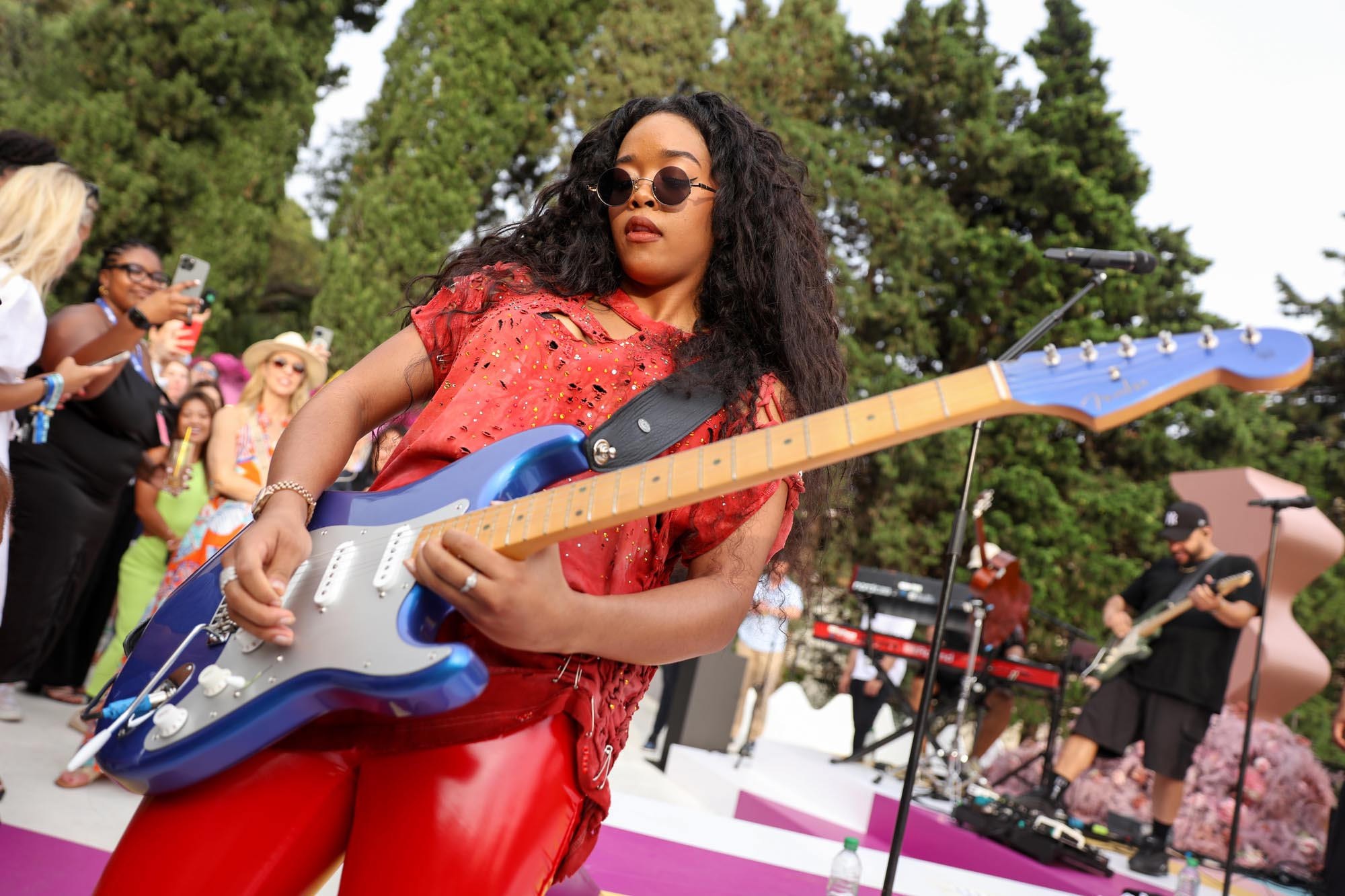 H.E.R. performing live, contemporary R&B rock guitar innovator
H.E.R. performing live, contemporary R&B rock guitar innovator
Image Credit: David M. Benett/Getty Images
H.E.R. consistently surprises audiences with her dynamic performances. While rooted in classic R&B, her guitar playing spans delicate accents to Prince-like rock shredding. Her single “Hold On” features her doubling vocal melodies with soaring guitar leads. “I also like to play my guitar like I’m singing,” she told Guitar World. “Sometimes, I like to sing and play my solos at the same time … even harmonizing my voice with my guitar.” In 2021, Fender honored her with a signature Stratocaster, making her the first Black woman to receive this recognition. H.E.R.’s ability to seamlessly blend R&B with rock guitar virtuosity marks her as a significant contemporary guitarist.
Key Tracks: “Hold On,” “Comfortable”
David Williams
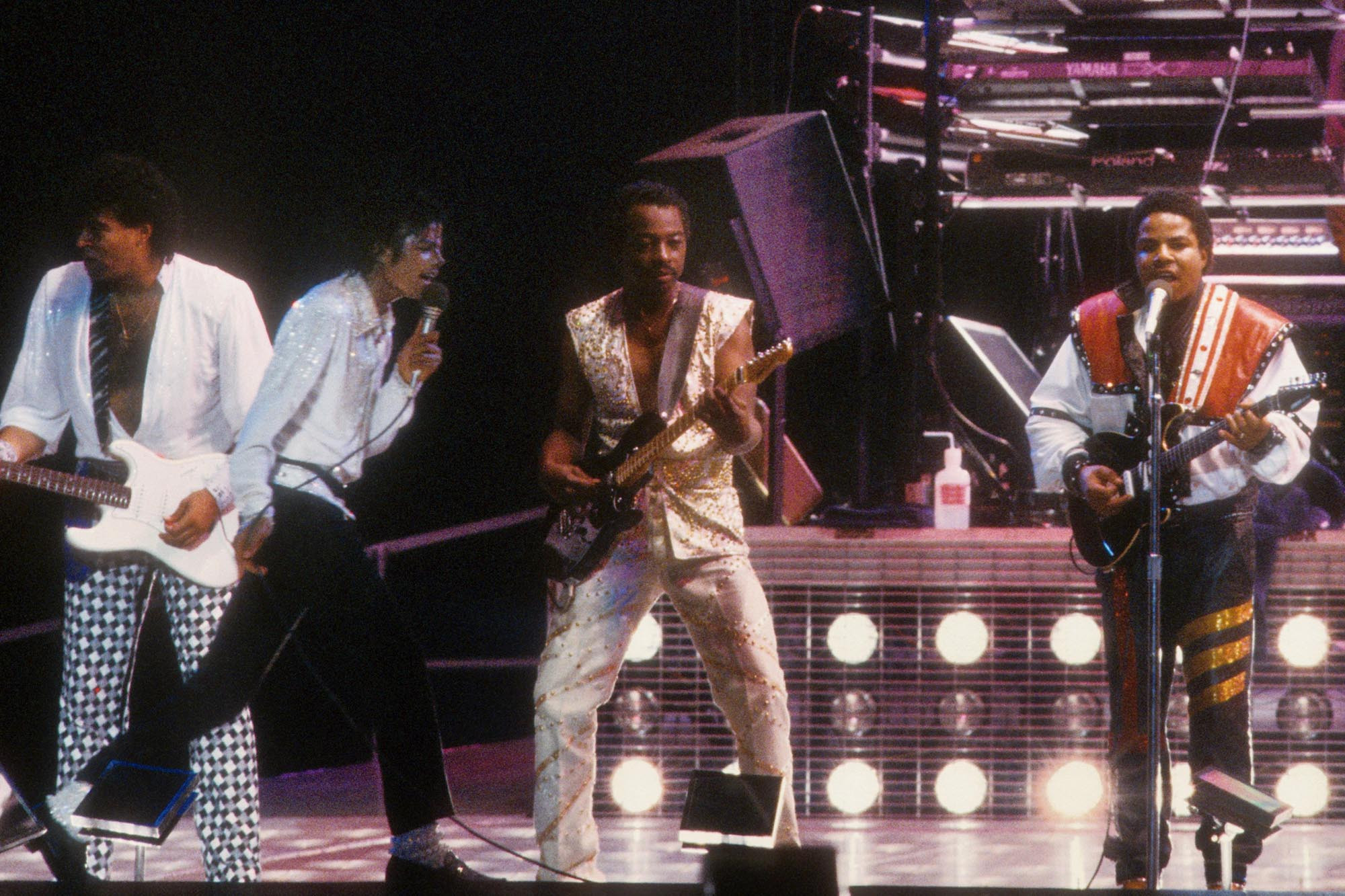 David Williams with The Jacksons in 1984, pop rock session guitar legend
David Williams with The Jacksons in 1984, pop rock session guitar legend
Image Credit: Michael Ochs Archive/Getty Images
David Williams, despite his jazz background, made his biggest impact on Eighties pop. His minimalist guitar touches are crucial to the rhythmic allure of Michael Jackson’s “Billie Jean,” Stevie Nicks’ “Stand Back,” and Diana Ross’ “Muscles.” A Vietnam veteran, Williams toured with Jackson and Madonna and worked with artists from Chaka Khan to Kenny Loggins. He described his “secret spice” for Top 40 hits: “You don’t need much of it, but the right amount gets the job done.” Williams’ understated yet vital guitar work on iconic pop-rock hits solidified his legacy as a master session player.
Key Tracks: “Billie Jean,” “Dirty Diana”
Etta Baker
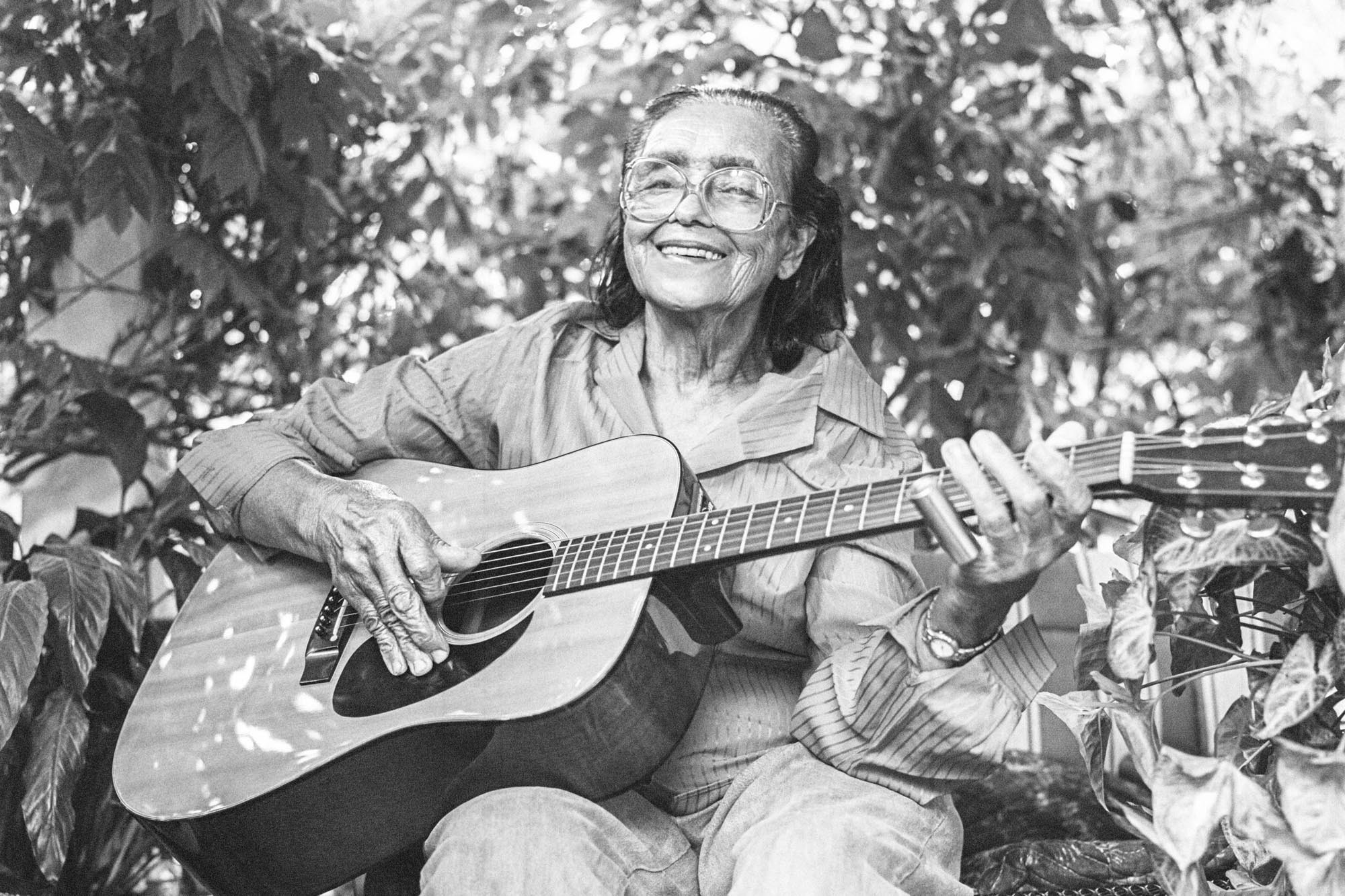 Etta Baker playing guitar, Piedmont blues guitar legend
Etta Baker playing guitar, Piedmont blues guitar legend
Image Credit: Timothy Duffy
Etta Baker is synonymous with Piedmont blues, a style blending ragtime and folk influences from the East Coast. Born in North Carolina in 1913, Baker learned guitar from her father and played family dances. Her instrumental compositions, like “One Dime Blues” (1956), were influential, inspiring Bob Dylan and Taj Mahal, who later recorded with Baker. Her intricate fingerpicking and blues-rooted style have influenced generations of guitarists, bridging blues and folk traditions and touching the edges of early rock and roll.
Key Tracks: “One Dime Blues,” “Carolina Breakdown”
Gustavo Cerati
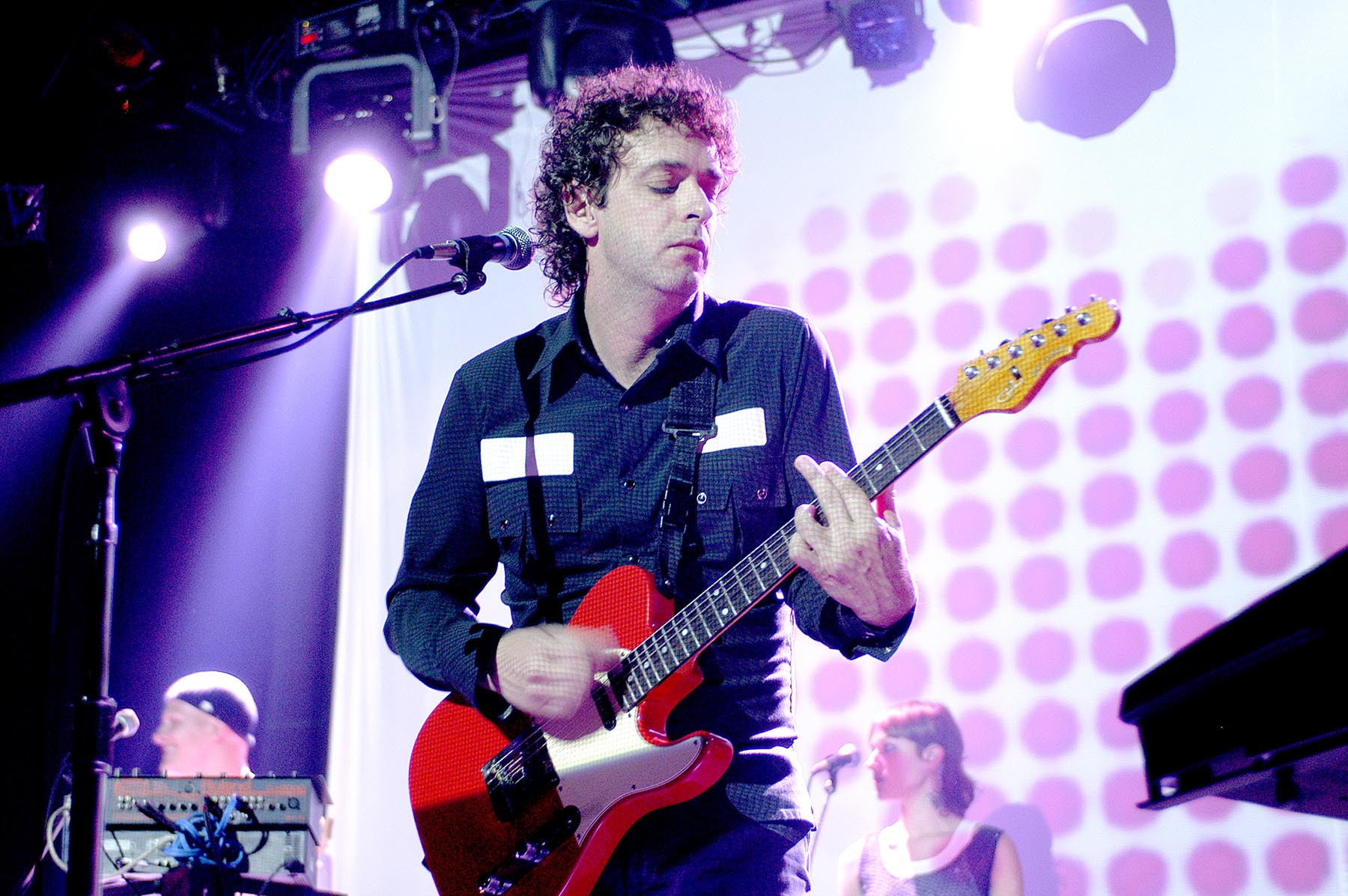 Gustavo Cerati performing live in 2003, Latin rock guitar icon
Gustavo Cerati performing live in 2003, Latin rock guitar icon
Image Credit: Paul Natkin/Getty Images
Gustavo Cerati transformed Latin rock with his songwriting and guitar work. In the mid-Eighties, the Argentine singer-songwriter sparked the rock en español boom with Soda Stereo and hits like “De Música Ligera.” After Soda Stereo, Cerati explored electronic music but returned to guitar-god mode with Ahí Vamos (2006), filled with raw electric riffs. Cerati’s powerful guitar playing and his role in popularizing Latin rock have made him an icon in music history.
Key Tracks: “Canción Animal,” “La Excepción”
Barbara Lynn
 Barbara Lynn posing in 1964, pioneering R&B and blues rock guitarist
Barbara Lynn posing in 1964, pioneering R&B and blues rock guitarist
Image Credit: Michael Ochs Archives/Getty Images
Barbara Lynn, at 16, penned “You’ll Lose a Good Thing,” a Number One R&B hit in 1962. Playing a right-handed guitar left-handed, she crafted a 60-year career. Her self-written songs have been covered by the Rolling Stones, Aretha Franklin, and sampled by the Beastie Boys, highlighting her relatable songwriting and guitar prowess. Lynn’s influence spans R&B, blues, and rock, making her a significant guitarist and songwriter.
Key Tracks: “You’ll Lose a Good Thing,” “I’ll Suffer”
Steve Jones
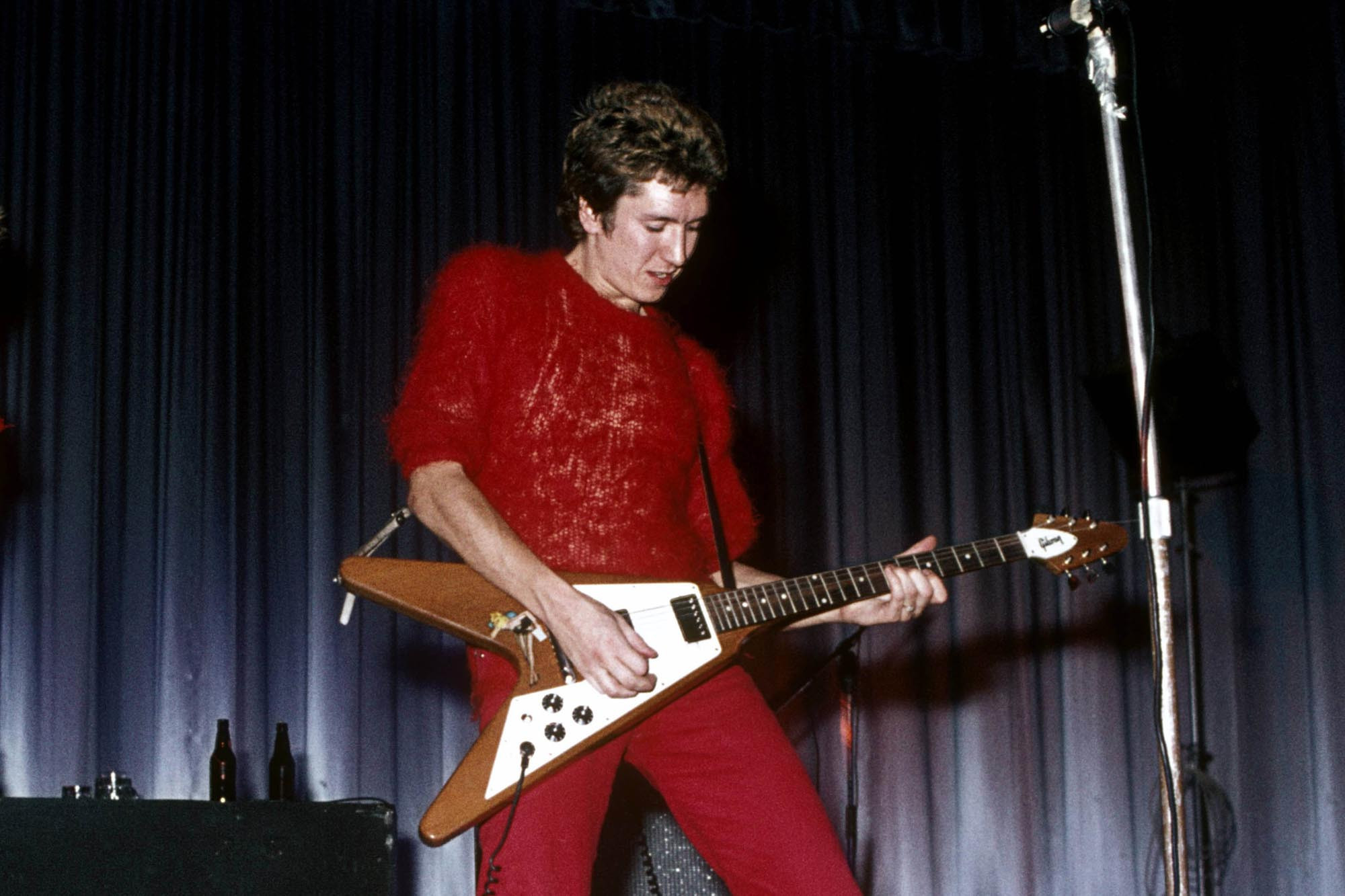 Steve Jones of Sex Pistols performing live, punk rock guitar icon
Steve Jones of Sex Pistols performing live, punk rock guitar icon
Image Credit: Chris Morphet/Redferns/Getty Images
Steve Jones of the Sex Pistols, wielding a white Les Paul Custom, became the sound of punk guitar. His raw power chords and glam-inspired solos mirrored Johnny Rotten’s rebellious lyrics. His riffs on Never Mind the Bollocks… (1977) inspired guitarists from Slash to Billie Joe Armstrong. Jones’s legacy is as much about attitude as technique, embodying punk’s chaotic spirit. “Actually, we’re not into music. We’re into chaos,” he famously stated. Jones’s raw, powerful guitar playing is foundational to punk rock.
Key Tracks: “God Save the Queen,” “Pretty Vacant”
Glenn Branca
 Glenn Branca performing live, avant-garde rock guitar composer
Glenn Branca performing live, avant-garde rock guitar composer
Image Credit: Hallwalls Archive/CC BY 3.0
Glenn Branca, a No Wave pioneer, transformed the guitar into a symphonic instrument. He composed for guitar ensembles up to 100 players, using custom tunings and modifications. His Symphony No. 1 (1981) featured Thurston Moore and Lee Ranaldo of Sonic Youth. Branca also released Sonic Youth’s first album, showcasing his talent for spotting musical revolutionaries. “I’ve got so many ideas about music that I haven’t even begun to work on,” he said. “If I lived to 200, I wouldn’t finish my work.” Branca’s avant-garde approach expanded the possibilities of the guitar in ensemble settings.
Key Tracks: “Light Field (In Consonance),” “Velvets and Pearls”
El Kempner
 El Kempner of Palehound performing live, indie rock guitar talent
El Kempner of Palehound performing live, indie rock guitar talent
Image Credit: Craig F. Walker/The Boston Globe/Getty Images
El Kempner of Palehound started playing guitar at age seven. Guitar became their guiding force, driving tracks like “The Clutch” from Eye on the Bat. Kempner’s versatility shines, equally adept at rocking out on a Stratocaster, fingerpicking acoustic melodies, or creating swirling arpeggios. Their refined skills and adaptability mark Kempner as a rising force in indie rock guitar.
Key Tracks: “The Clutch,” “Independence Day”
Fred ‘Sonic’ Smith and Wayne Kramer
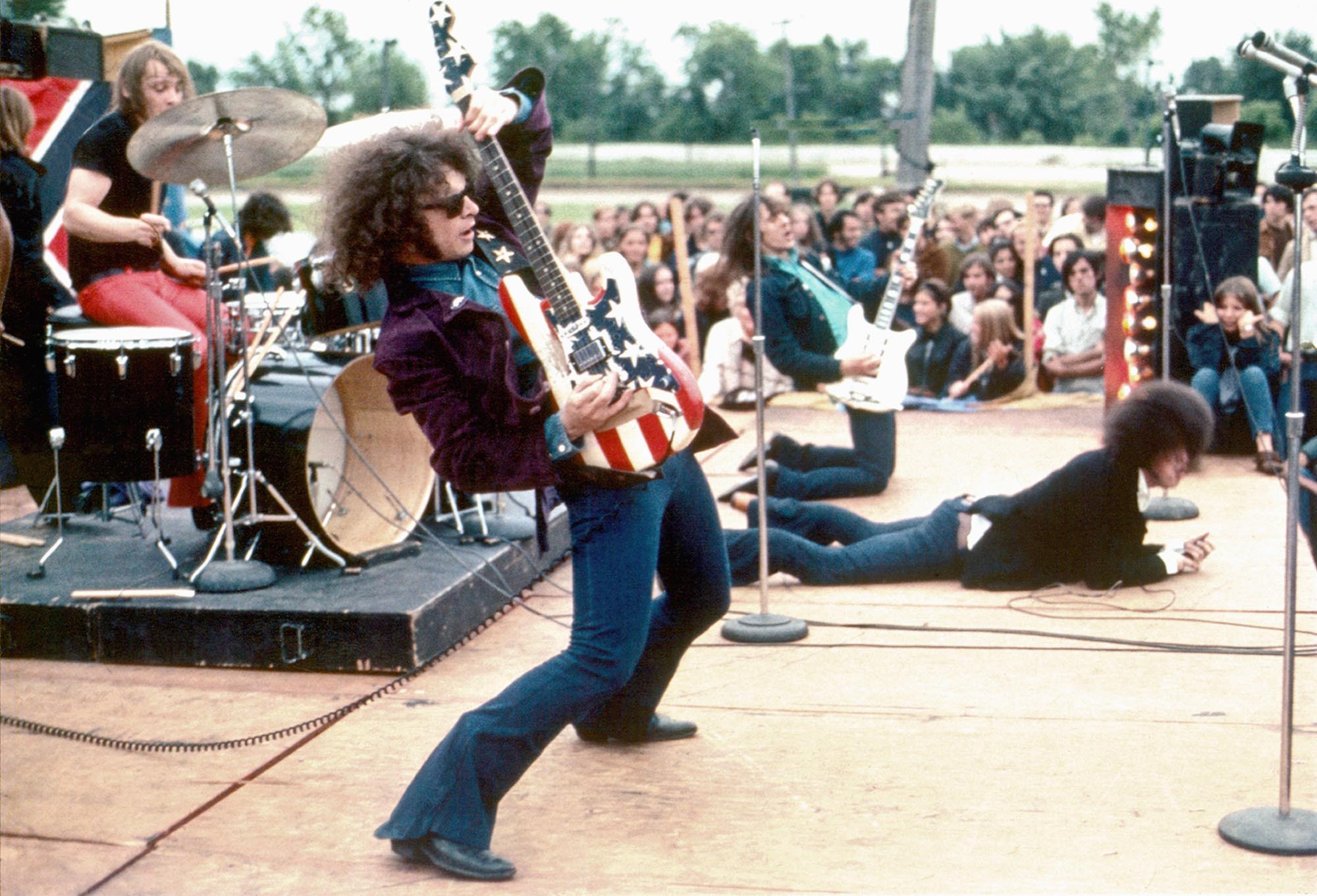 Wayne Kramer and Fred "Sonic" Smith of MC5 performing live, proto-punk rock guitar duo
Wayne Kramer and Fred "Sonic" Smith of MC5 performing live, proto-punk rock guitar duo
Image Credit: Leni Sinclair/Michael Ochs Archive/Getty Images
The MC5’s guitar duo, Wayne Kramer and Fred “Sonic” Smith, forged in Detroit in the 1960s, combined Chuck Berry and Motown influences with free jazz elements. They pushed their band’s high-energy jams into uncharted territory while maintaining a strong groove. “If you play with another guitar player long enough, you exhaust everything you know, and then you start playing what you don’t know, and you get into something good,” Kramer said. “We just found that we could play syncopated rhythm parts simultaneously, and they would lock in perfectly, or we could solo simultaneously and they’d still lock in.” Their synergistic guitar work defined the high-energy sound of MC5.
Key Tracks: “Looking at You,” “Poison”
Marv Tarplin
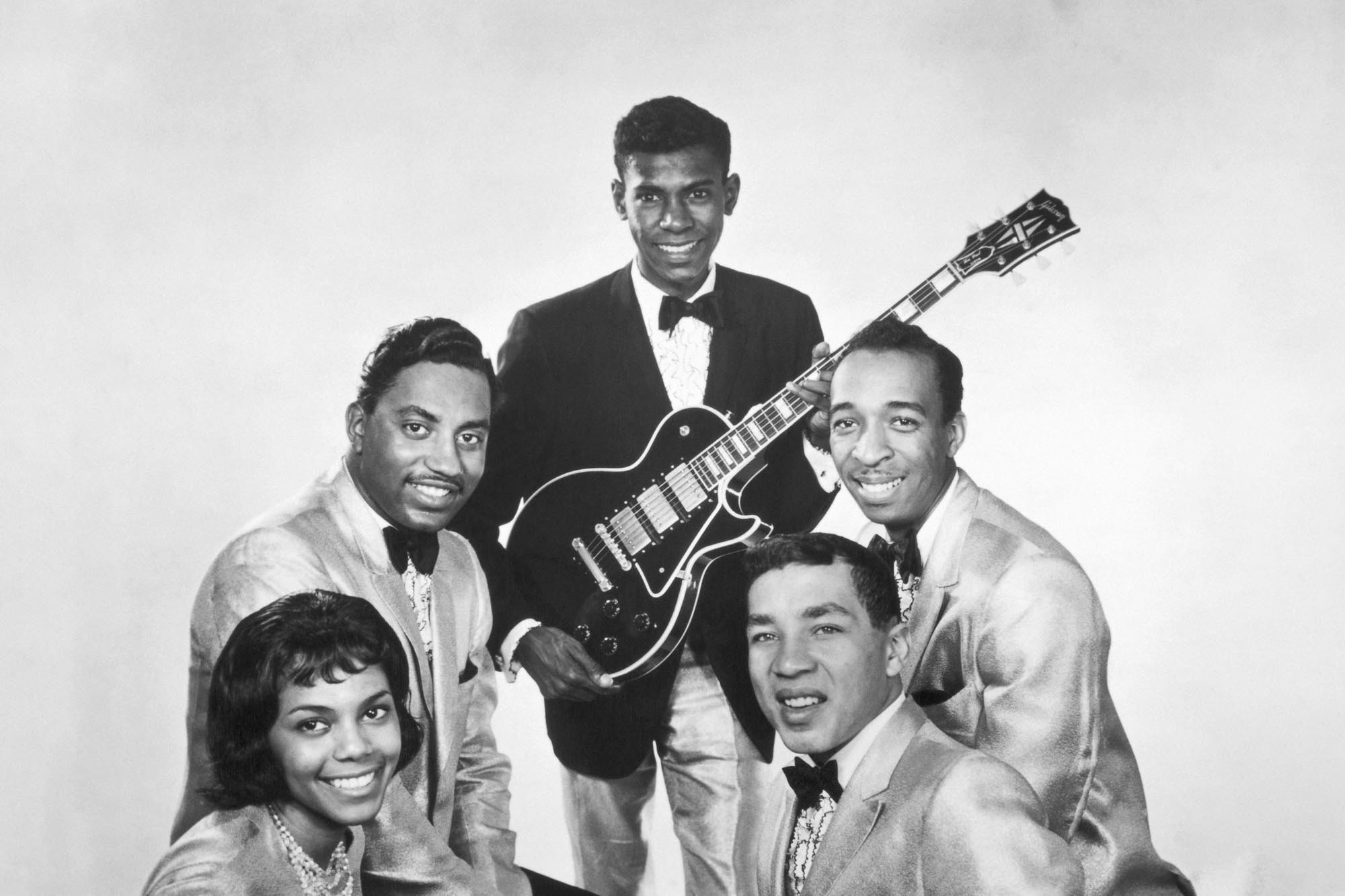 Marv Tarplin with Smokey Robinson and The Miracles, soul guitar innovator
Marv Tarplin with Smokey Robinson and The Miracles, soul guitar innovator
Image Credit: Michael Ochs Archives/Getty Images
Marv Tarplin’s guitar playing and songwriting were crucial to Smokey Robinson and the Miracles’ success. His versatility suited Motown’s demands, from driving chords on “Going to a Go-Go” to the 12-string acoustic on “You Really Got a Hold on Me.” His chord exploration led to the Miracles’ hit “The Tracks of My Tears.” He continued working with Robinson after the Miracles, adding delicate touches to “Cruisin’.” Tarplin’s soulful and melodic guitar style was essential to the Motown sound.
Key Tracks: “The Tracks of My Tears,” “Cruisin’”
Joseph Spence
 Joseph Spence playing guitar, Bahamian guitar legend
Joseph Spence playing guitar, Bahamian guitar legend
Image Credit: Guy Droussart
Joseph Spence, encountered by musicologists in the Bahamas in 1958, played guitar so richly it sounded like two guitarists. “He often seemed to be improvising in the bass, the middle strings, and the treble at the same time,” noted Sam Charters. Spence’s sharp-angled fingerpicking, across blues, spirituals, and calypso, influenced the folk movement and beyond. The Grateful Dead covered his “We Bid You Goodnight,” and the Beach Boys’ “Sloop John B” is indebted to Spence’s version. Spence’s unique and complex fingerpicking style had a lasting impact on folk and rock music.
Key Tracks: “Brownskin Girl,” “Jump in the Line”
Molly Tuttle
 Molly Tuttle performing live in 2014, bluegrass guitar innovator
Molly Tuttle performing live in 2014, bluegrass guitar innovator
Image Credit: Scott Dudelson/Getty Images
Molly Tuttle, a bluegrass innovator, and her band Golden Highway are making roots music history. Her flatpicking, influenced by Tony Rice, Joni Mitchell, and Clarence White, respects tradition while pushing boundaries. She became the first bluegrass act nominated for a Best New Artist Grammy. “Our generation of bluegrass players are really pushing in some new directions,” Tuttle told Rolling Stone. “I feel lucky to be part of this scene that’s breaking down barriers.” Tuttle is expanding the horizons of bluegrass guitar and earning recognition in the wider music world.
Key Tracks: ‘Take the Journey,” “El Dorado”
James Blood Ulmer
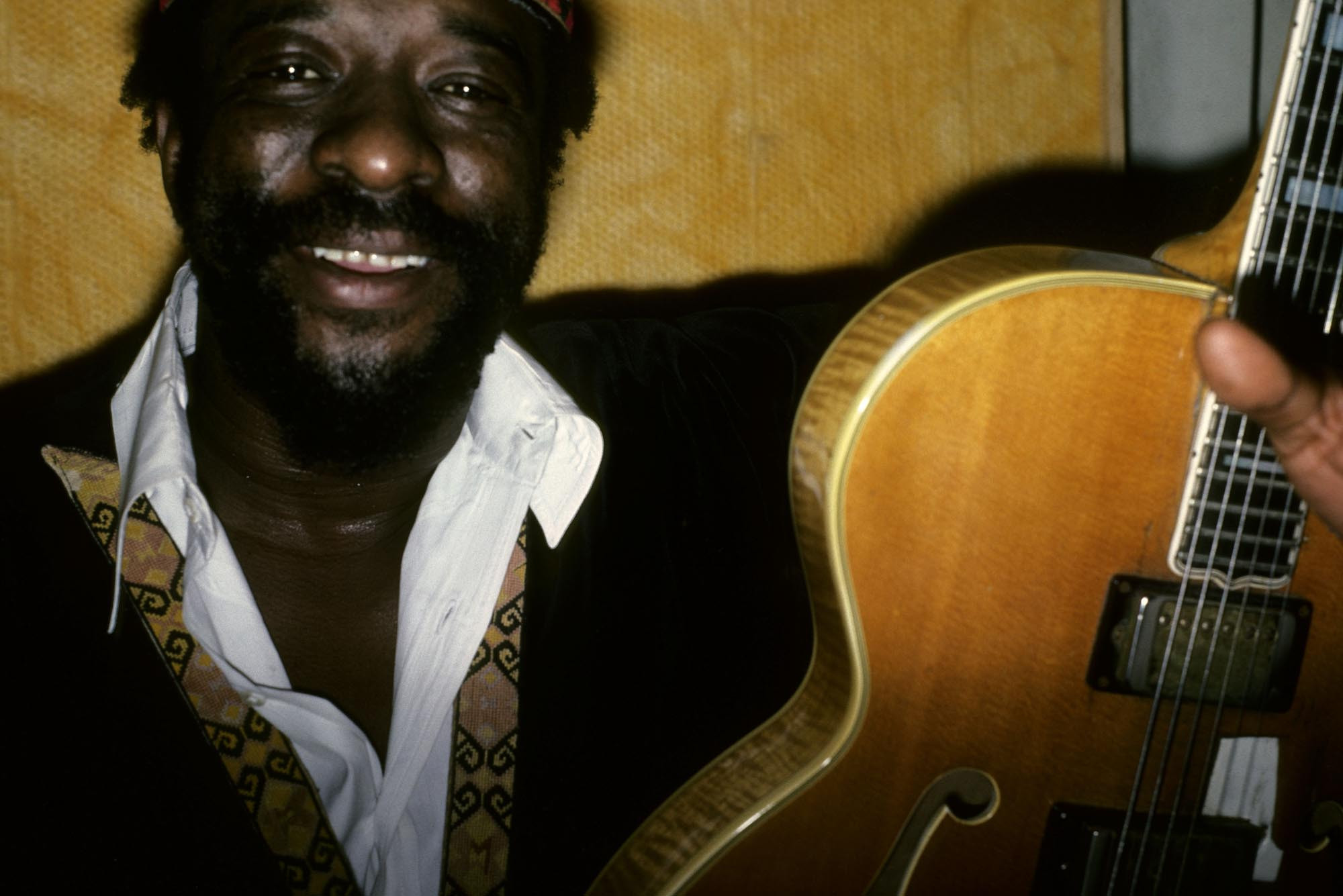 James Blood Ulmer posing, avant-garde jazz rock guitarist
James Blood Ulmer posing, avant-garde jazz rock guitarist
Image Credit: Peter Noble/Redferns/Getty Images
James Blood Ulmer fused soul jazz, free jazz, blues, and funk into a unique guitar style. Playing with Ornette Coleman, Ulmer developed stinging tones, skronky riffs, and jittery solos. His albums Tales of Captain Black and Odyssey influenced the downtown New York experimental scene, from Vernon Reid to no-wave bands. Reid described Ulmer: “He is a rock. He is unapologetically himself. He is the blues. Itself. Not its rules.” Ulmer’s genre-bending guitar work was highly influential in avant-garde and experimental rock.
Key Tracks: “Theme from Captain Black,” “Timeless”
Courtney Barnett
 Courtney Barnett playing guitar live, indie rock singer-songwriter
Courtney Barnett playing guitar live, indie rock singer-songwriter
Image Credit: Griffin Lotz for Rolling Stone
Courtney Barnett shifts between intricate fingerpicking and garage-rock solos, enhancing her storytelling. About “Write a List of Things to Look Forward To,” she said, “It sounds like you’re driving across a highway and it’s sunny.” Her guitar playing complements her songs’ liberating feel. Her collaboration with Kurt Vile, Lotta Sea Lice, showcases their dazzling guitar chemistry. Barnett’s dynamic guitar style, ranging from delicate to energetic, supports her insightful songwriting.
Key Tracks: “Turning Green,” “Over Everything,” “Pedestrian at Best”
Glenn Tipton and K.K. Downing
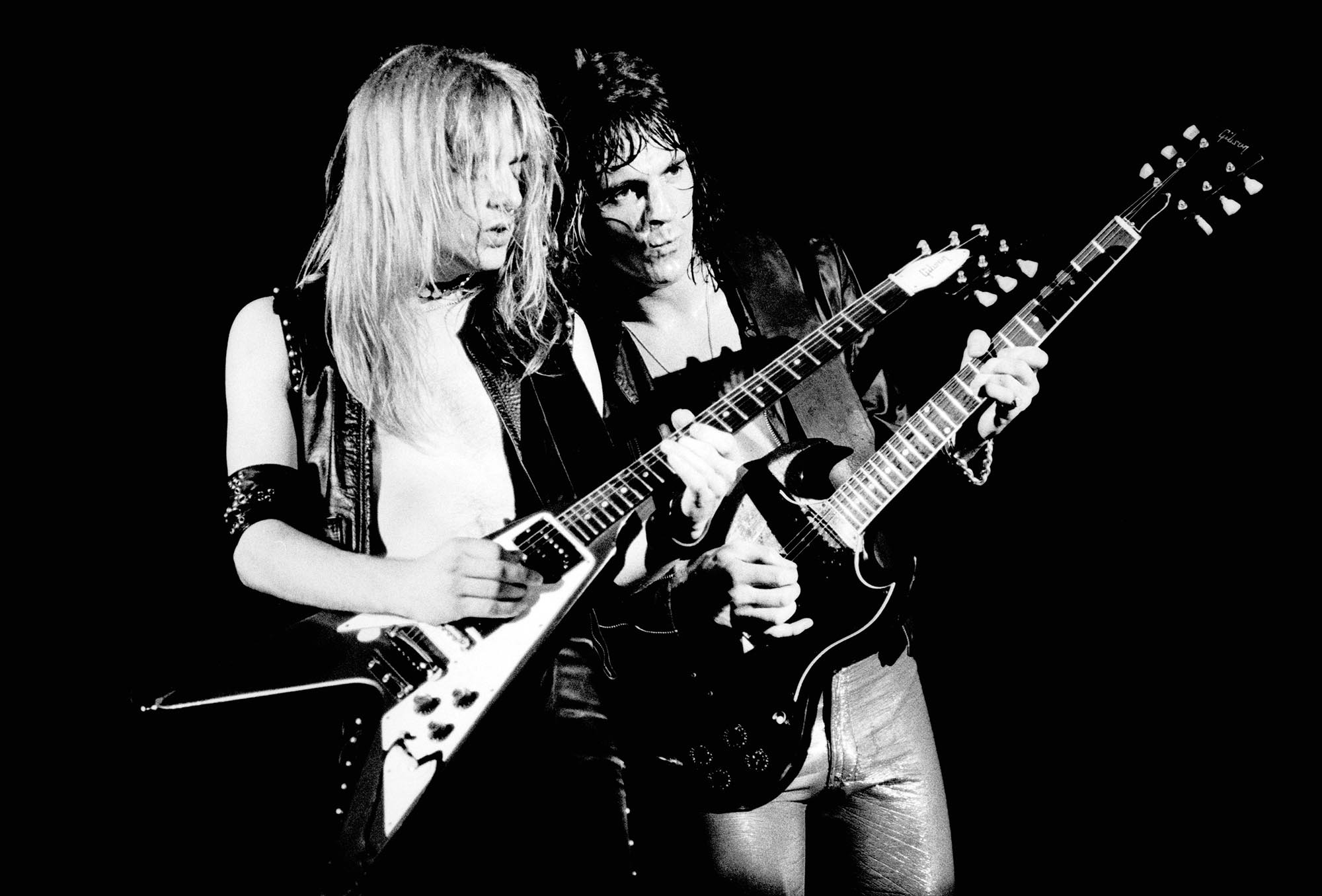 KK Downing and Glenn Tipton of Judas Priest performing live in 1978, heavy metal guitar duo
KK Downing and Glenn Tipton of Judas Priest performing live in 1978, heavy metal guitar duo
Image Credit: Gus Stewart/Redferns/Getty Images
Judas Priest, with guitarists K.K. Downing and Glenn Tipton, redefined heavy metal guitar in the mid-Seventies. Instead of rhythm and lead roles, they doubled riffs, traded solos, and used harmony leads. This template influenced Iron Maiden, Metallica, Slayer, and countless two-guitar bands. Slayer’s Kerry King noted, “If it’s Tipton, it’s super-fucking tasty. If it’s K.K., it’s a more edgy, almost punky kind of vibe, which is a great mix.” Tipton and Downing’s dual guitar approach became a defining characteristic of heavy metal.
Key Tracks: “Victim of Changes,” “Breaking the Law,” “The Hellion/Electric Eye”
Lzzy Hale
 Lzzy Hale of Halestorm performing live, modern hard rock guitar icon
Lzzy Hale of Halestorm performing live, modern hard rock guitar icon
Image Credit: Tim Mosenfelder/Getty Images
Lzzy Hale of Halestorm is a hard rock goddess, known for her powerful voice and fierce guitar playing. Her rhythmic style complements Halestorm’s lead guitarist Joe Hottinger. Hale is also a skilled shredder, mimicking vocal melodies on guitar. Gibson made her their first female brand ambassador and designed a signature Explorer model for her. “The people at Gibson keep telling me the demographic that buys the most electric guitars right now are female,” Hale said. “The wave is coming whether anybody likes it or not.” Hale’s influence and powerful guitar presence are shaping modern rock.
Key Tracks: “I Miss the Misery,” “The Steeple”
Thomas McClary
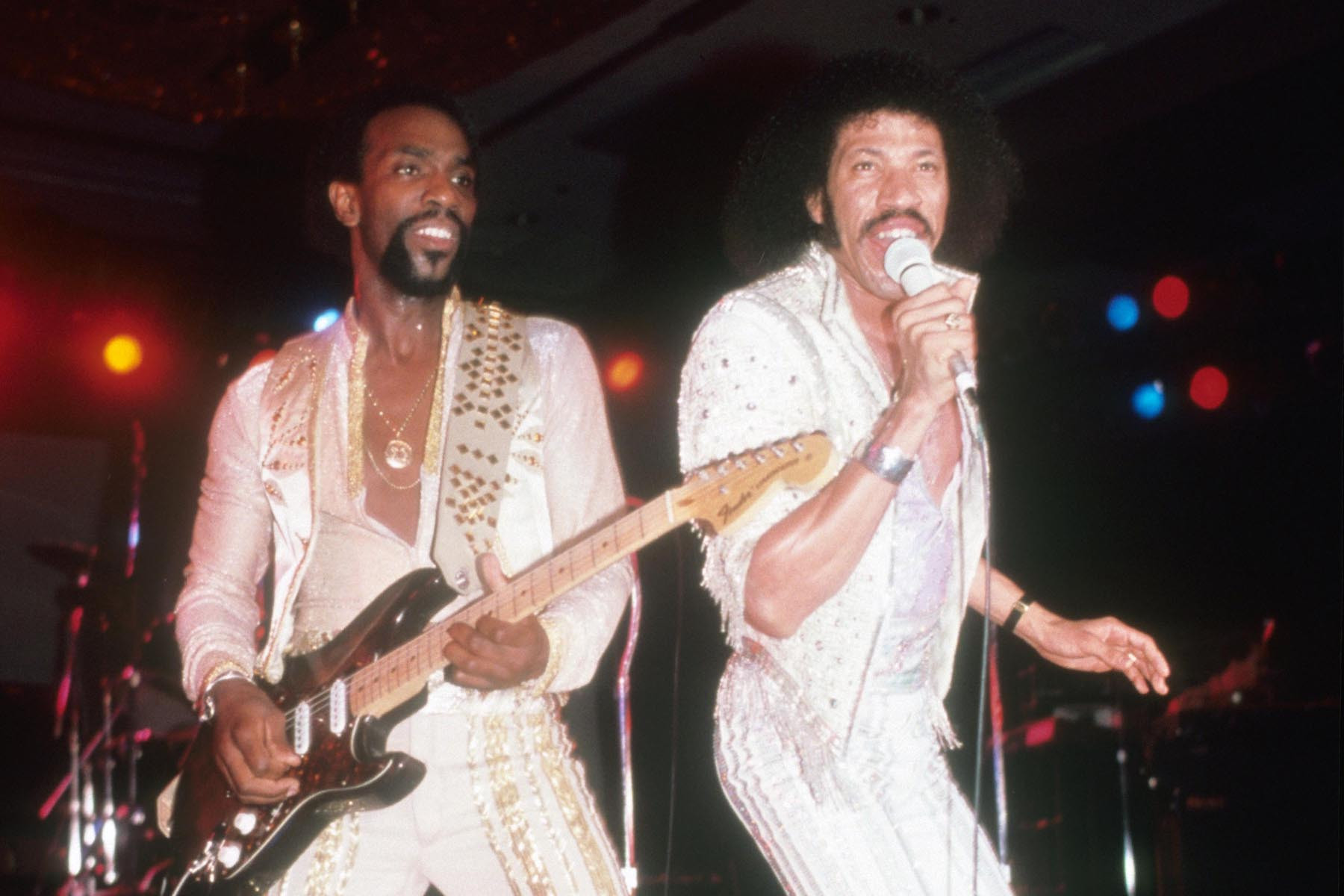 Thomas McClary of Commodores in 1978, funk rock guitar pioneer
Thomas McClary of Commodores in 1978, funk rock guitar pioneer
Image Credit: Alamy
Thomas McClary, a founding member of the Commodores with Lionel Richie, blended funk, soul, gospel, and country. His guitar work, mixing glam and blues grit on songs like “Easy,” helped define Eighties crossover sound. “I would listen to Santana, Jimi Hendrix, Albert King, James Taylor, and Crosby, Stills, Nash, and Young,” he recalled. “I thought it would be really great to mesh those guys together to have a really raunchy, raw, authentic sound that could be appealing to everybody.” McClary’s genre-fusing guitar style was key to the Commodores’ broad appeal.
Key Tracks: “Easy,” “Brick House”
Steve Hackett
Image Credit: Richard E. Aaron/Redferns/Getty Images
Steve Hackett joined Genesis in 1971 and transformed their sound. He introduced two-hand tapping, captured on Nursery Crime (1971), predating Eddie Van Halen’s wider popularization. His soaring solo on “Firth of Fifth” is a prog-rock masterpiece. Leaving Genesis in 1977 for a solo career, Hackett stated, “I’m very happy to have freed up guitarists to play dazzling solos and come up with things that would only be dreamt up at one time.” Hackett’s innovative techniques and contributions to progressive rock guitar are significant.
Key Tracks: “Horizons,” “Firth of Fifth”
Kurt Vile
 Kurt Vile holding a Fender Jaguar guitar, indie rock guitar stylist
Kurt Vile holding a Fender Jaguar guitar, indie rock guitar stylist
Image Credit: Paul Bergen/Redferns/Getty Images
Kurt Vile, seemingly laid-back, is a serious guitarist. His style blends drones and intricate solos, influenced by learning banjo as a teen. “Banjos are in an open tuning, and they’ve got that high drone string,” he told guitar.com. “It’s not like you’d even think about that when you’re playing as a kid, but I came to really like that ethereal drone.” His career incorporates diverse influences into a subtly virtuosic style. Vile’s unique guitar style, blending drone and intricate melodies, defines his indie rock sound.
Key Tracks: “Pretty Pimpin,” “Wakin on a Pretty Day”
Keiji Haino
 Keiji Haino posing, Japanese noise rock guitar innovator
Keiji Haino posing, Japanese noise rock guitar innovator
Image Credit: Alamy
Keiji Haino’s free-form performances are cathartic noise explorations. With groups like Aihiyo, his work ranges from soft chords to intense fuzz. “People practice really hard because they want people to check them out,” he told Vice Japan. “And then they say it’s improvisation. That drives me nuts.” Haino’s extreme and improvisational guitar work challenges conventional rock boundaries.
Key Tracks: “A Shredded Coiled Cable Within This Cable Sincerity Could Not be Contained,” “Why in the Courtesy of the Prey Always Confused With the Courtesy of the Hunters Pt. 1”
Lucy Dacus
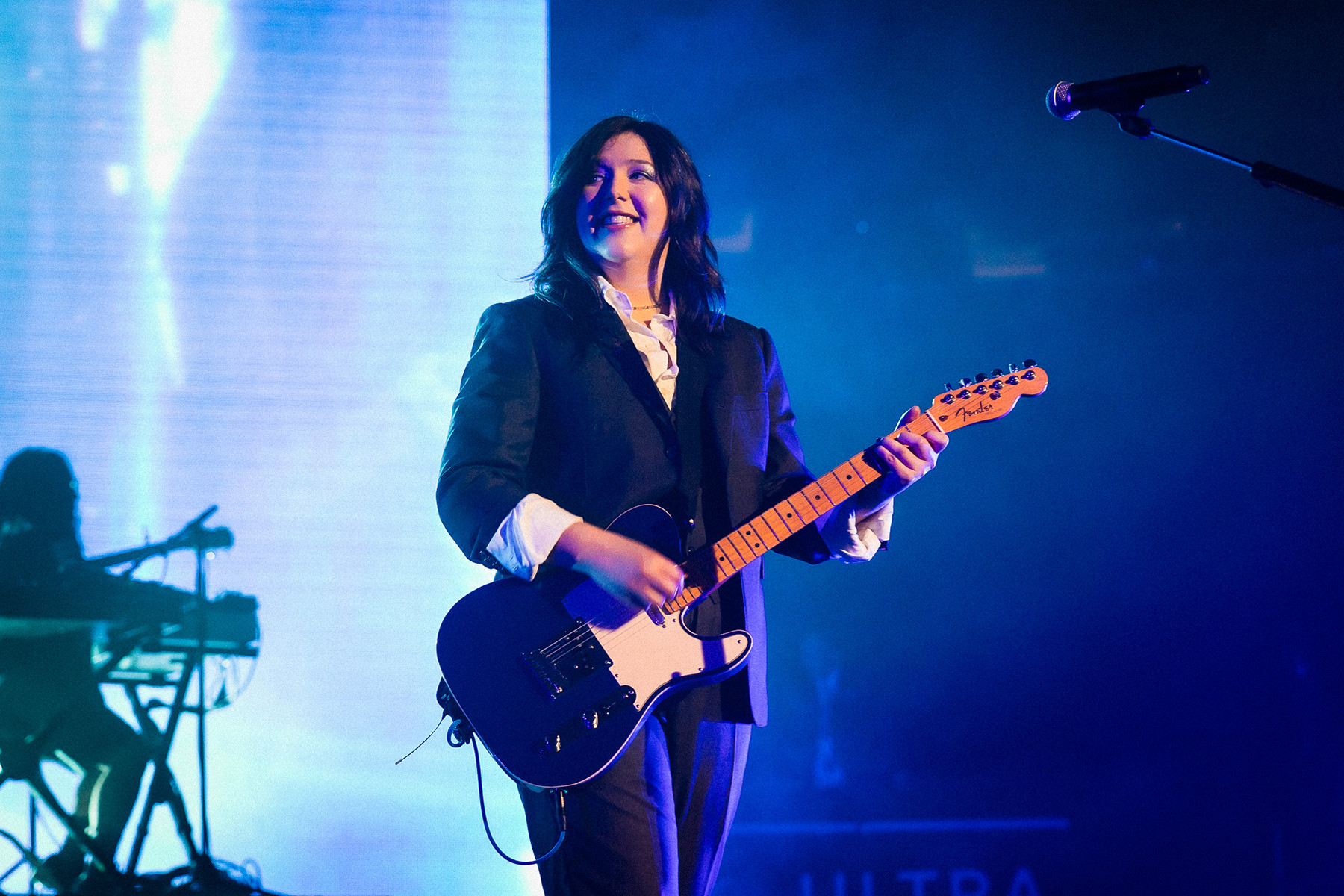 Lucy Dacus playing guitar live, indie rock singer-songwriter
Lucy Dacus playing guitar live, indie rock singer-songwriter
Image Credit: Griffin Lotz for Rolling Stone
For Lucy Dacus, guitar is as vital as her voice. From “I Don’t Wanna Be Funny Anymore” to boygenius, her guitar arrangements are understated yet crucial. Live performances of “Night Shift” showcase her dynamic playing, building from quiet strumming to powerful noise. Dacus’s guitar work, though often subtle, is integral to her emotionally resonant songs.
Key Tracks: “Night Shift,” “I Don’t Wanna Be Funny Anymore”
José Feliciano
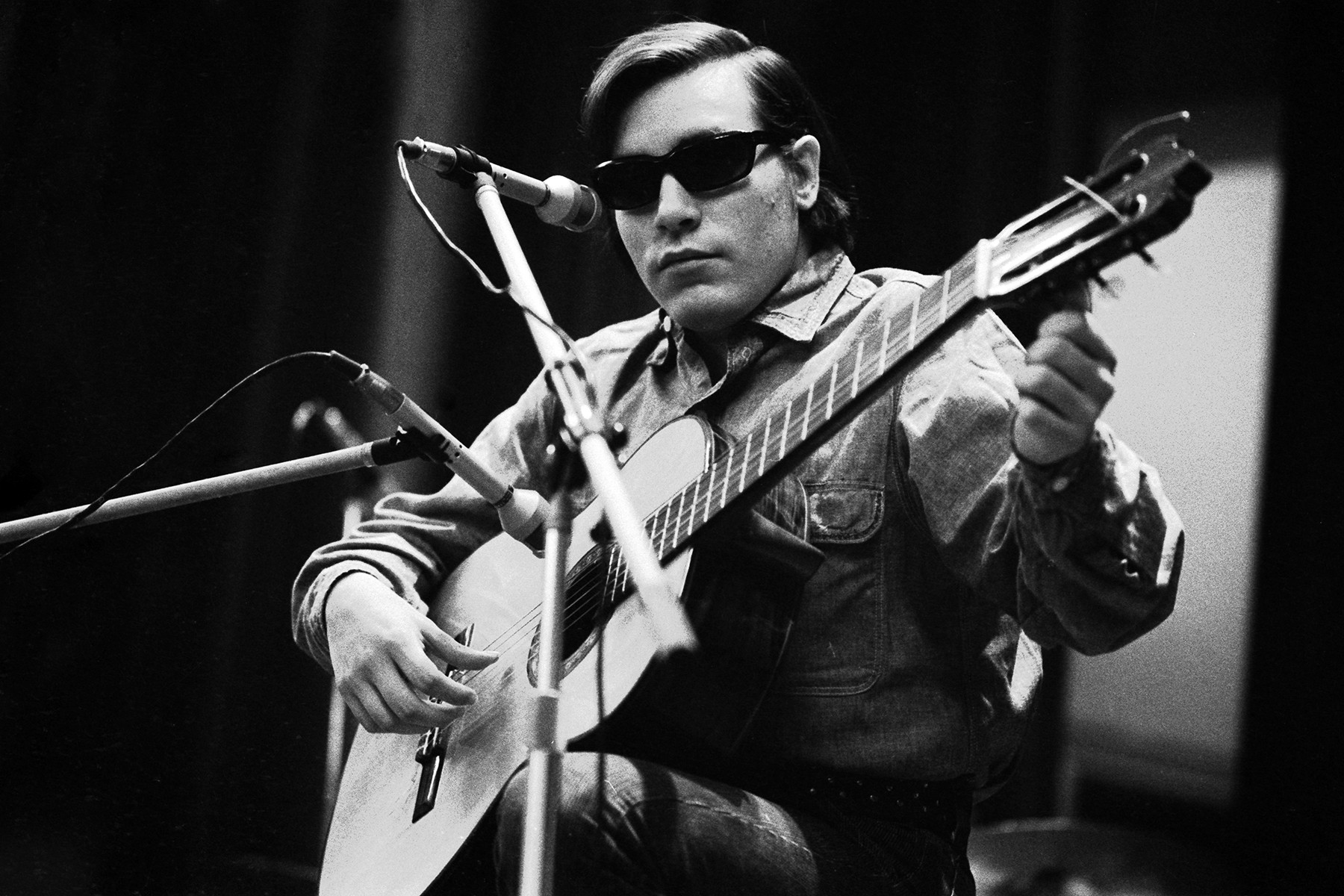 José Feliciano performing live in 1973, virtuoso acoustic rock guitarist
José Feliciano performing live in 1973, virtuoso acoustic rock guitarist
Image Credit: Evening Standard/Hulton Archive/Getty Images
José Feliciano, beyond “Feliz Navidad,” is an acoustic guitar virtuoso. Blind since birth, his playing blends boleros, folk, rock, jazz, soul, and bossa nova. His 1968 reinvention of “California Dreamin’” and his fiery “Light My Fire” reimagining showcased his radical style. Feliciano’s genre-bending guitar work reshaped mainstream pop rock in the Sixties.
Key Tracks: “Light My Fire,” “Here, There and Everywhere”
Nick Zinner
 Nick Zinner posing, dance punk rock guitar stylist
Nick Zinner posing, dance punk rock guitar stylist
Image Credit: Sacha Lecca for Rolling Stone
Nick Zinner of Yeah Yeah Yeahs aimed for “trashy, punky, grimy” sound. His style fuses dance-punk, Van Halen panache, Rowland S. Howard’s intensity, and Johnny Marr’s grandeur. Zinner’s minimal yet emotive guitar work defines Yeah Yeah Yeahs’ sound, from “Maps” to “Heads Will Roll.” Zinner’s distinctive guitar style is central to the Yeah Yeah Yeahs’ energetic sound.
Key Tracks: “Y Control,” “Maps,” “Gold Lion”
Kaki King
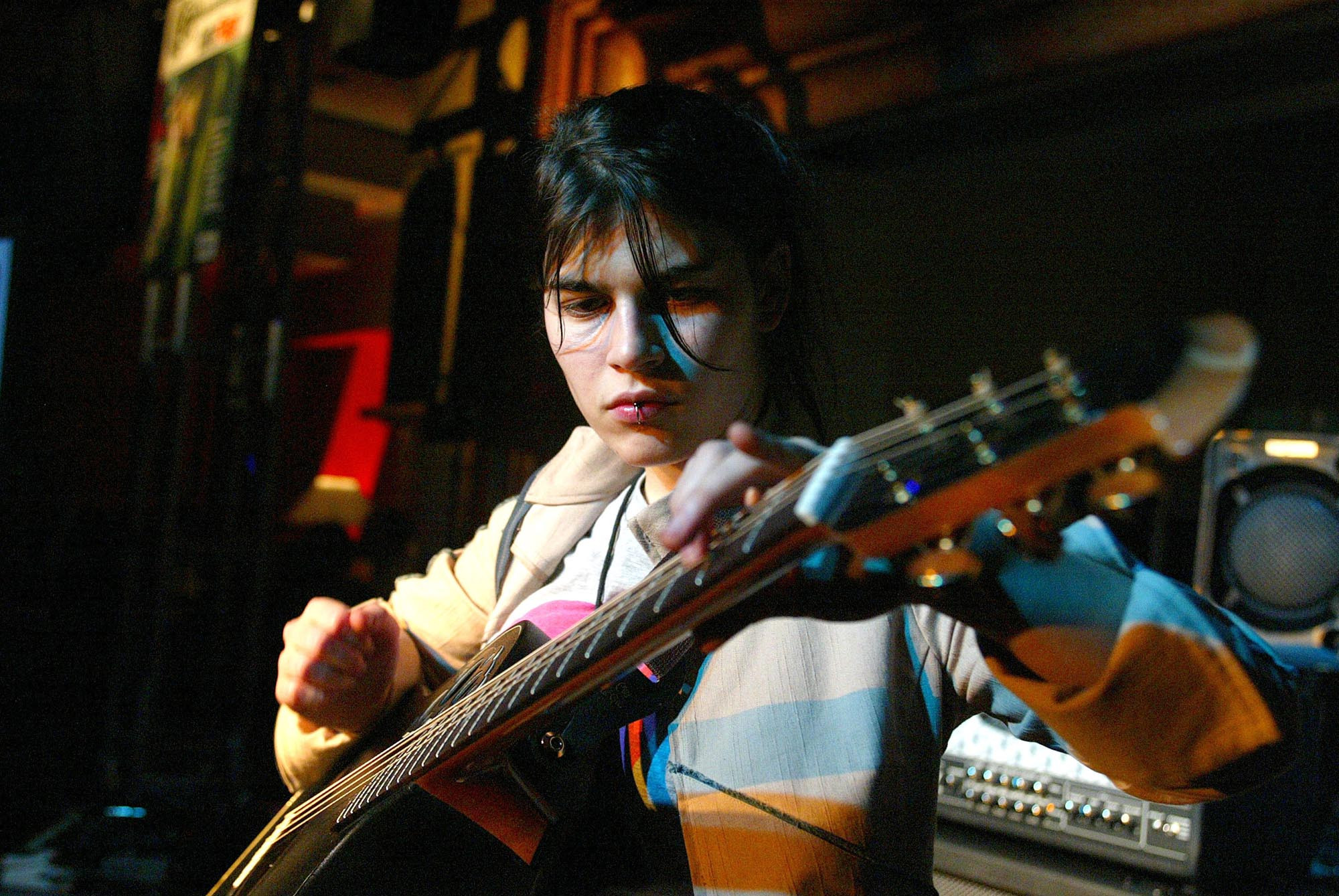 Kaki King performing live, acoustic guitar innovator
Kaki King performing live, acoustic guitar innovator
Image Credit: Jeffrey Mayer/WireImage
Kaki King is a sonic adventurer, blending Preston Reed and John Cage influences. She experiments with tunings, treated guitars, loops, fingerstyle, tapping, and percussive techniques. “I’ll think, ‘Let’s see what happens if I lower this string here and raise that one there,’” she told Premier Guitar. “When you tune your guitar differently, all of a sudden your fingers and your mind have to be creative again because you’re not relying on shapes and places that sound good or feel familiar.” King’s experimental approach expands the boundaries of acoustic guitar playing.
Key Tracks: “Playing With Pink Noise,” “Skimming the Fractured Surface to a Place of Endless Light”
Gary Clark Jr.
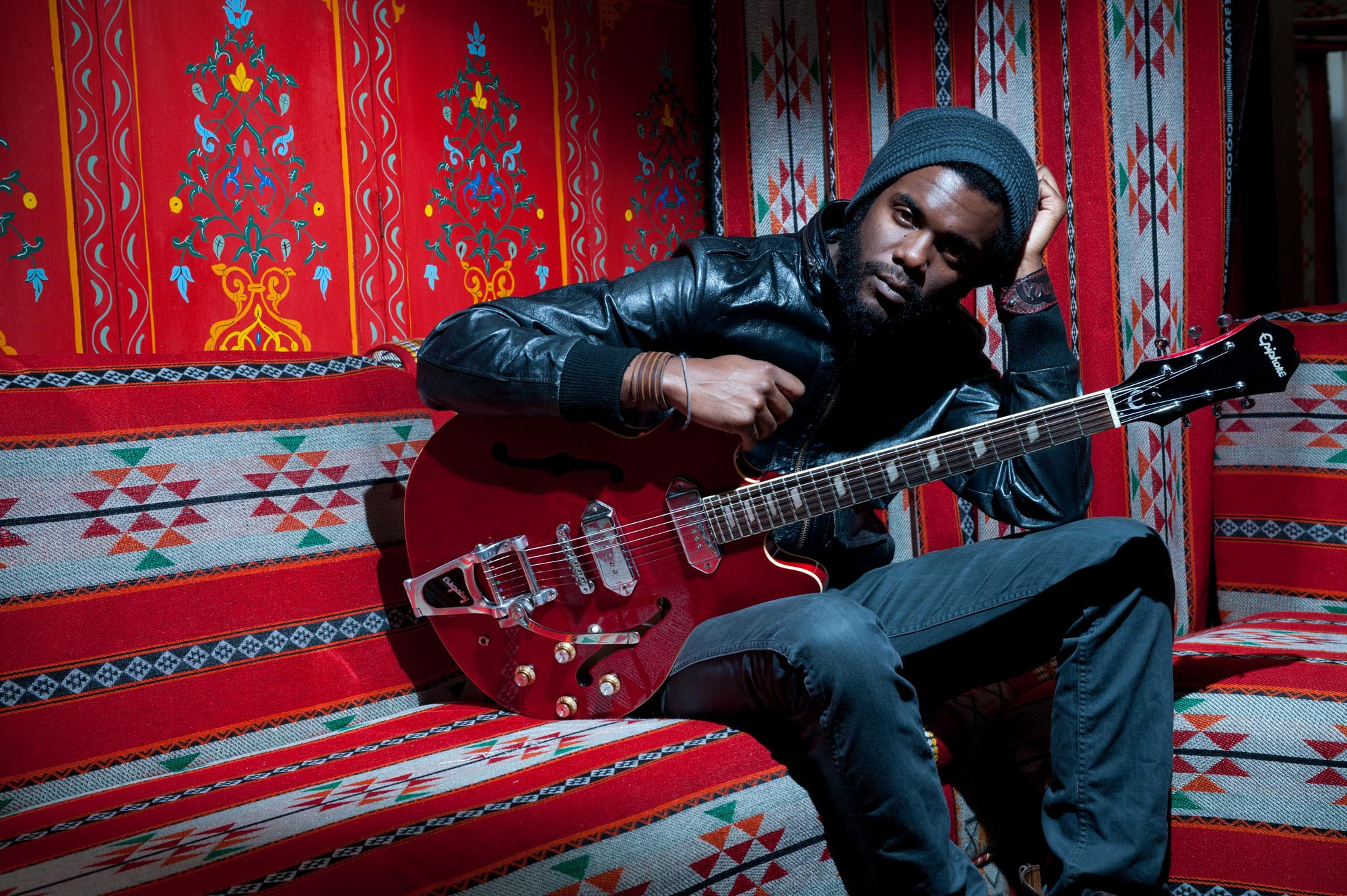 Gary Clark Jr. posing in 2012, modern blues rock guitar hero
Gary Clark Jr. posing in 2012, modern blues rock guitar hero
Image Credit: Rob Monk/Guitarist Magazine/Future/Getty Images
Gary Clark Jr., initially seen as a Hendrix or Stevie Ray Vaughan heir, transcends blues-rock with soul, funk, grunge, and hip-hop elements. Collaborating with Foo Fighters and Alicia Keys, he expands his musical range. “I don’t think that I’m reaching my full potential if I just do what people expect of me,” he told Rolling Stone. “I love to play, and I love to experiment, and there are a lot more roads to explore.” Clark Jr.’s genre-blending guitar style positions him as a leading figure in modern rock and blues.
Key Tracks: “This Land,” “Grinder”
Amadou Bagayoko
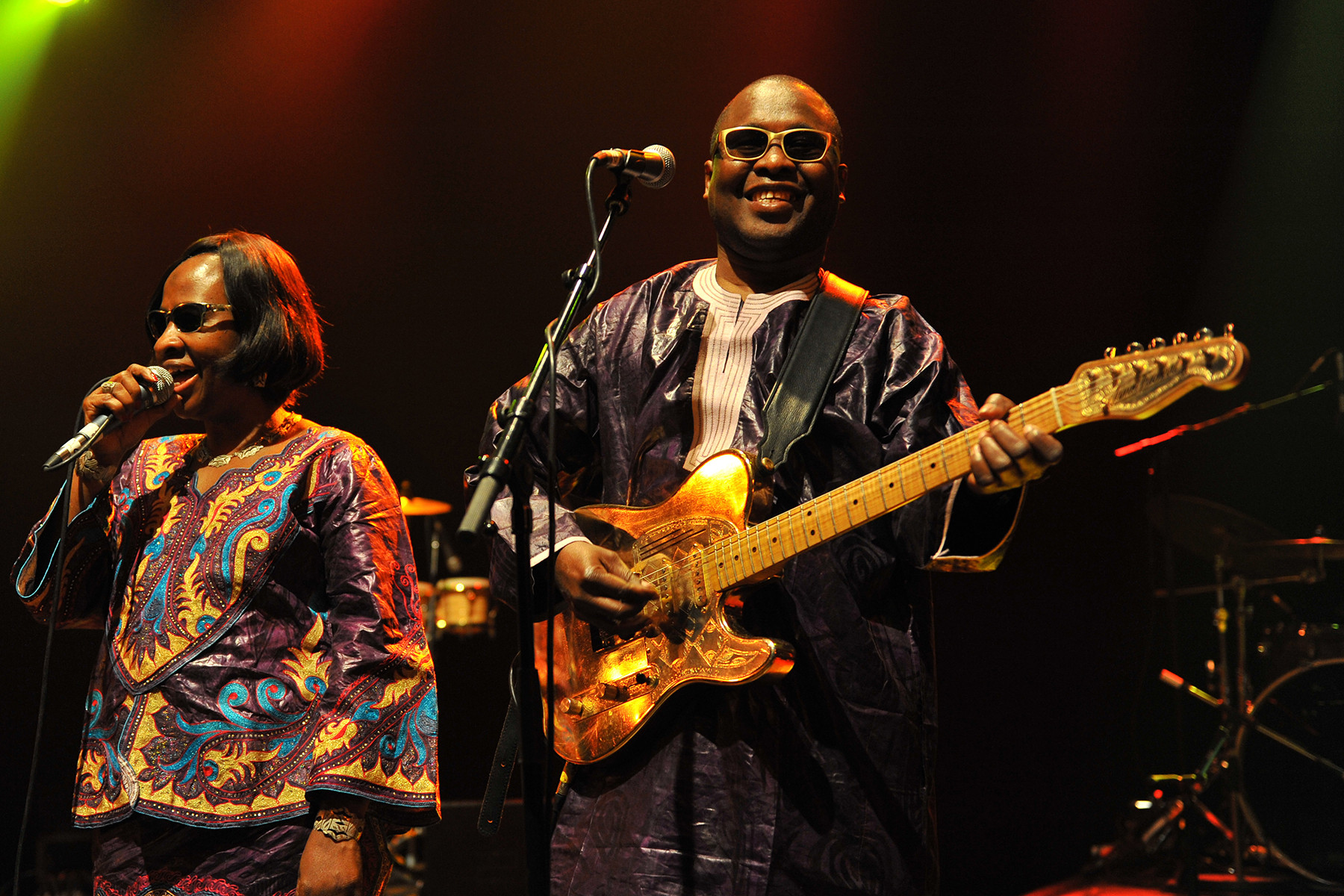 Amadou Bagayoko of Amadou & Mariam performing live in 2012, Malian rock guitar crossover artist
Amadou Bagayoko of Amadou & Mariam performing live in 2012, Malian rock guitar crossover artist
Image Credit: C Brandon/Redferns/Getty Images
Amadou Bagayoko of Amadou & Mariam gained international recognition with bright, melodic duets driven by his guitar. Influenced by Western pop and rock, he cites Rod Stewart, Led Zeppelin, and Eric Clapton as inspirations. “People are often surprised when we explain how much we were influenced by Western pop music,” he said. “I grew up listening to records by Rod Stewart, Led Zeppelin, James Brown, Crosby, Stills, and Nash, Eric Clapton, Jeff Beck, Pink Floyd, Stevie Wonder … That’s because they were the only records we had in Mali!” Bagayoko’s blend of Malian rhythms with Western rock influences creates a unique crossover sound.
Key Tracks: “Djanfa,” “Ce N’est Pas Bon”
Justin Broadrick
 Justin Broadrick of Godflesh on stage, industrial metal guitar innovator
Justin Broadrick of Godflesh on stage, industrial metal guitar innovator
Image Credit: Karjean Levine/Getty Images
Justin Broadrick, from Godflesh to Napalm Death and Jesu, created a unique guitar lexicon. His industrial-metal riffs in Godflesh, grindcore pioneering in Napalm Death, and psychedelic post-metal in Jesu showcase his range. In Napalm Death, he pioneered grindcore’s sound with extreme distortion. In Jesu, he layered noise into beautiful soundscapes. “On everything he does, his guitar sighs, groans, and weeps, but nothing else sounds like it.” Broadrick’s innovative and extreme guitar techniques have defined industrial and grindcore genres.
Key Tracks: “Like Rats,” “Silver,” “Scum”
Hugh McCracken
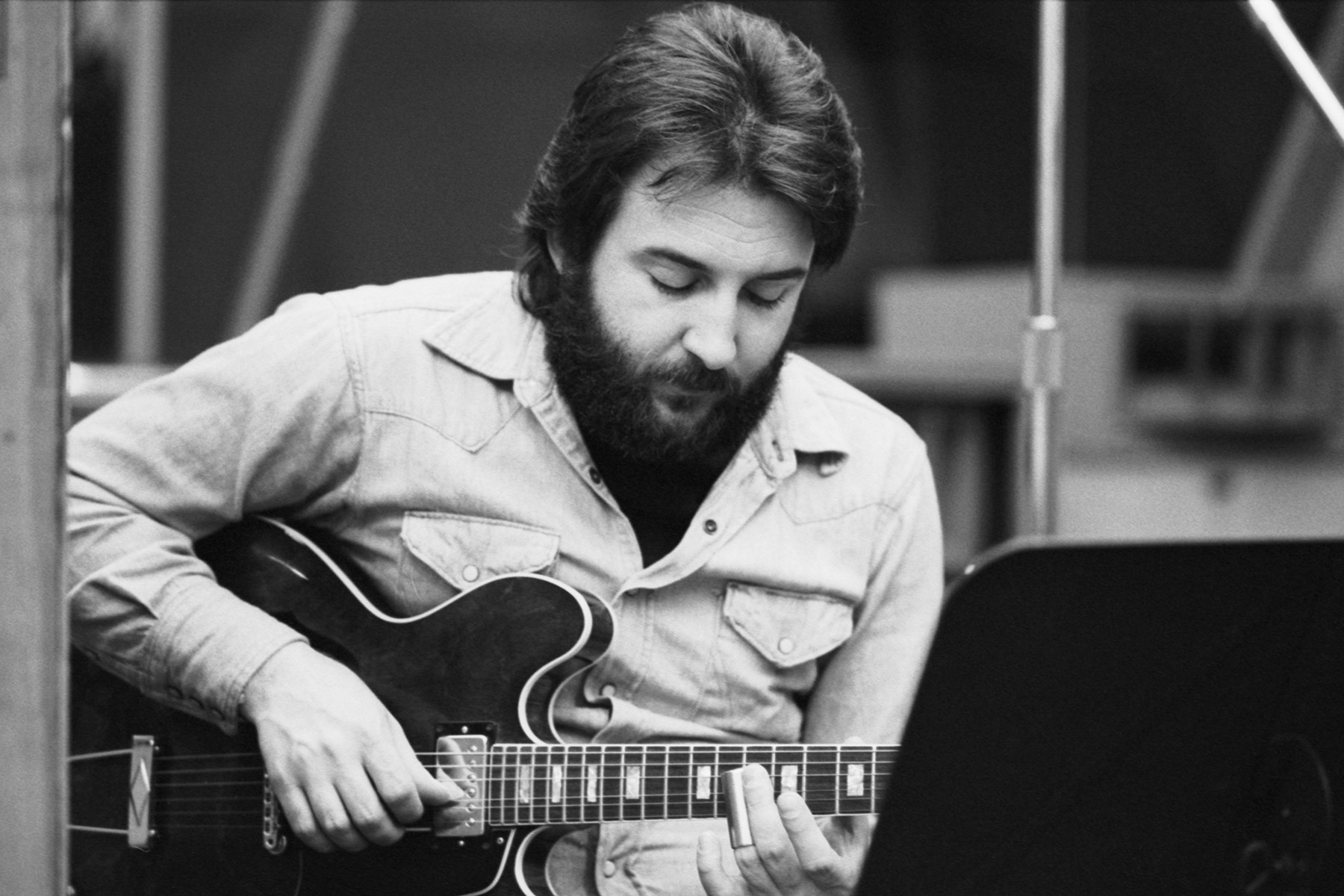 Hugh McCracken posing during recording session, legendary session guitarist
Hugh McCracken posing during recording session, legendary session guitarist
Image Credit: David Gahr/Getty Images
Hugh McCracken, an East Coast session guitarist, left his mark on countless classics without being a showy soloist. His lead on Steely Dan’s “Hey Nineteen,” lick on Van Morrison’s ”Brown Eyed Girl,” and acoustic work on Roberta Flack’s “Killing Me Softly With His Song” are iconic. He enriched Paul Simon, Alicia Keys, and John Lennon’s tracks. McCracken’s tasteful and versatile guitar work made him a sought-after session musician.
Key Tracks: “Hey Nineteen,” “Killing Me Softly With His Song”
Eric Johnson
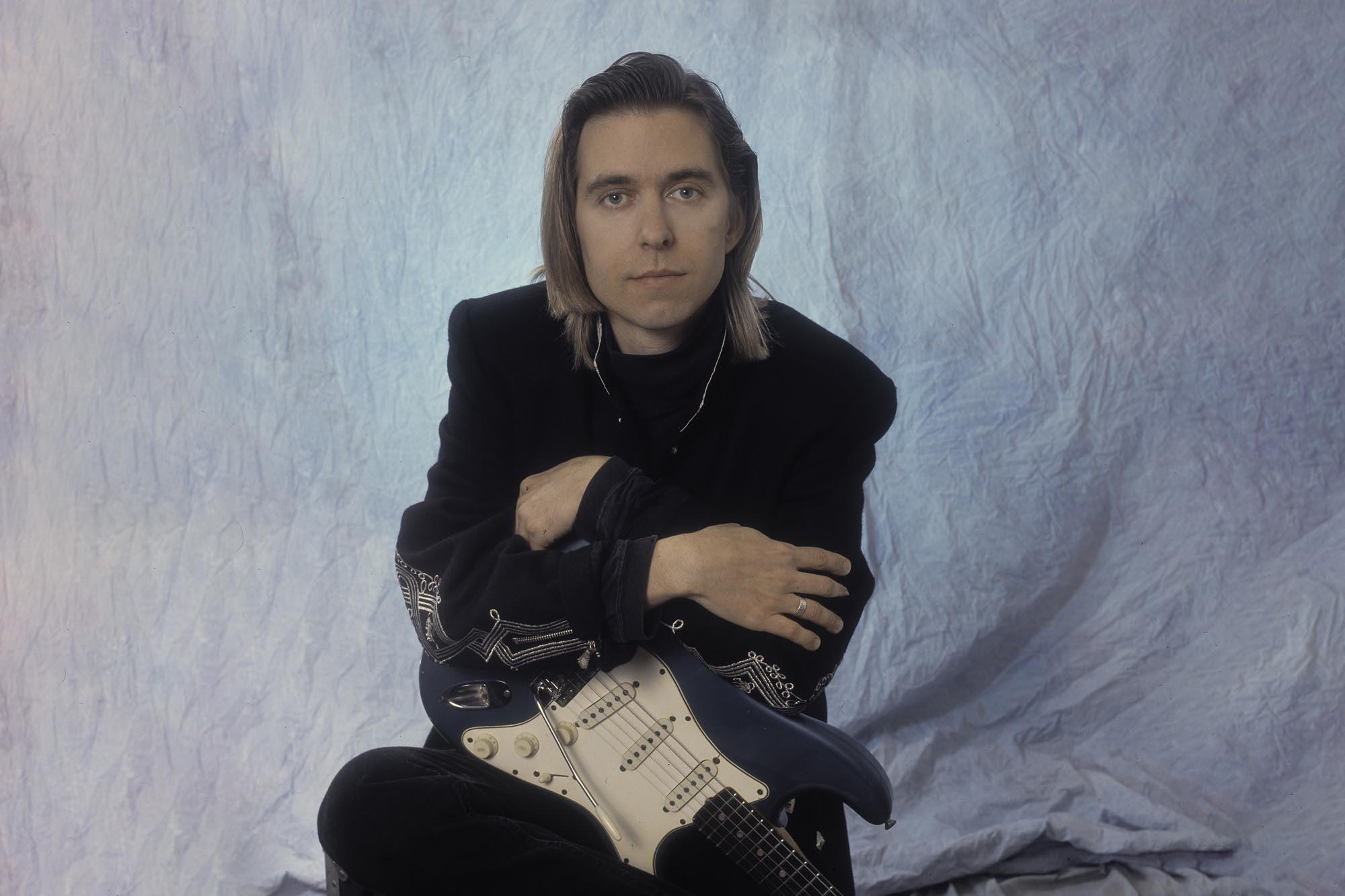 Eric Johnson posing in 1991, virtuoso fusion rock guitarist
Eric Johnson posing in 1991, virtuoso fusion rock guitarist
Image Credit: Paul Natkin/Getty Images
Eric Johnson, an Austin-born technician, is revered by fellow guitarists. Steve Morse called him “so good it’s ridiculous,” and Stevie Ray Vaughan deemed him “one of my favorite guitarists.” A fusion stylist leaning towards rock, Johnson rose in Austin in the Seventies but faced career setbacks. His instrumental album Ah Via Musicom (1990) went platinum, but he’s known for collaborations like G3 with Satriani and Vai. Johnson’s technical brilliance and fusion style have earned him respect among guitarists.
Key Tracks: “Cliffs of Dover,” “Benny Man’s Blues”
Lynn Taitt
 Lynn Taitt, creator of rocksteady guitar sound
Lynn Taitt, creator of rocksteady guitar sound
Image Credit: Federal Records
Lynn Taitt, born in Trinidad, shaped Jamaican rocksteady guitar. He created the sound on early rocksteady recordings like Hopeton Lewis’ “Take It Easy” and Derrick Morgan’s “Tougher Than Tough.” When Ernest Ranglin left Jamaica, Taitt became the top session guitarist. His work on Desmond Dekker’s “007 (Shanty Town)” is iconic. Though active briefly, his influence is cemented through his student Hux Brown, who refined Taitt’s style for reggae guitar. Taitt’s foundational work defined rocksteady guitar and influenced reggae.
Key Tracks: “007 (Shanty Town),” “Take It Easy”
Grant Green
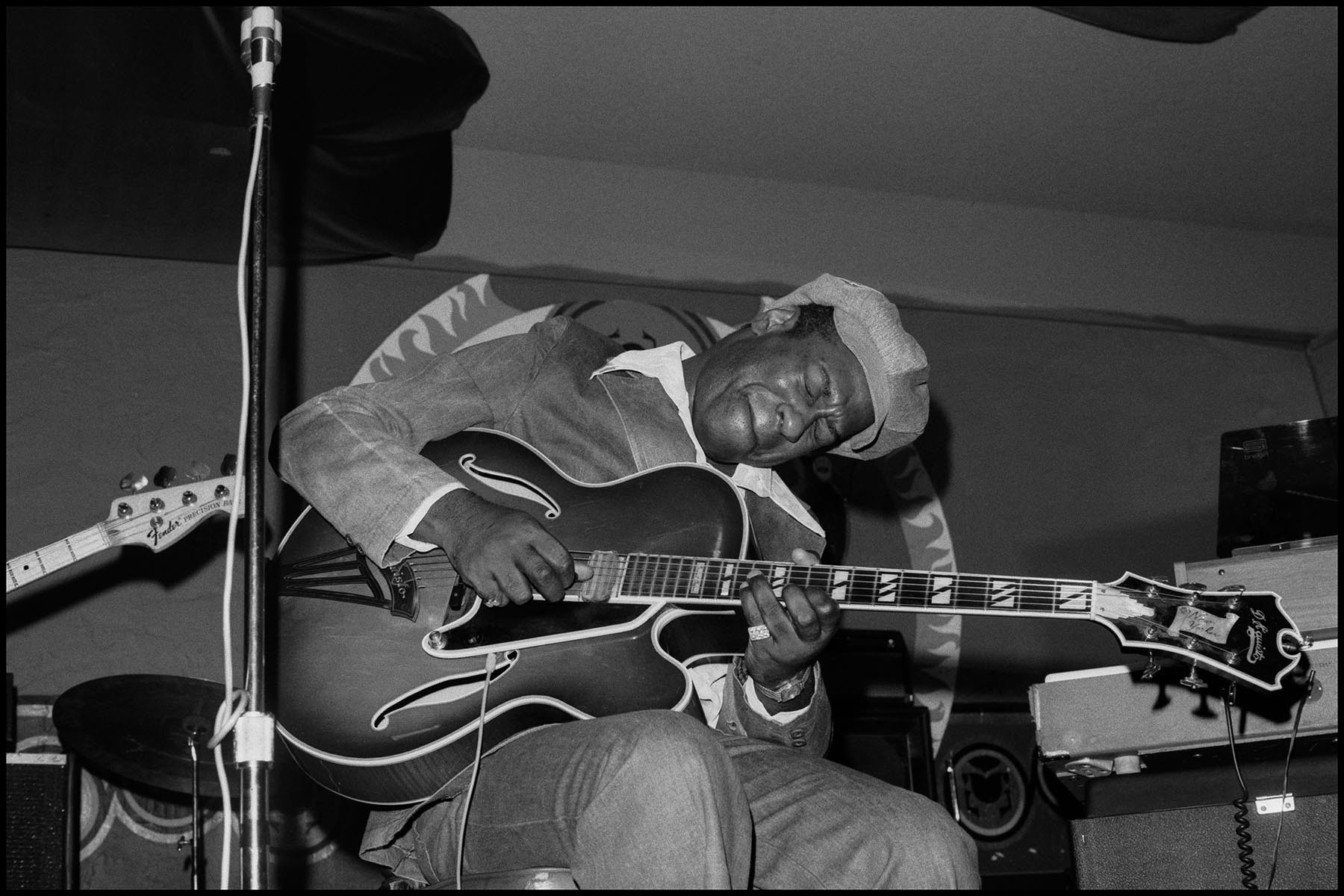 Grant Green performing live in 1975, soul jazz guitar pioneer
Grant Green performing live in 1975, soul jazz guitar pioneer
Image Credit: Janet Fries/Getty Images
Grant Green, from hard bop, pioneered soul jazz. A Charlie Parker fan, his Blue Note debut was in 1960, followed by a stellar five-year run. He explored Latin jazz in Matador (1964). Green died young in 1979, but his influence thrives, especially in hip-hop, sampled by A Tribe Called Quest and Kendrick Lamar. Green’s cool grooves and jazz-funk style have had a lasting impact across genres.
Key Tracks: “Idle Moments,” “Jean De Fleur,” “On Green Dolphin Street”
Vince Gill
 Vince Gill posing, country rock guitar virtuoso
Vince Gill posing, country rock guitar virtuoso
Image Credit: Beth Gwinn/Redferns/Getty Images
Vince Gill, celebrated for his vocals, is also a lethal guitarist. His chicken picking and twangy bends feature on singles like “Liza Jane.” He honors California country guitarists on Bakersfield (2013). Gill has guested on albums by Miranda Lambert, Dolly Parton, and Don Henley. He tours with the Eagles since 2017, showcasing his guitar and vocal talents. Gill’s virtuosity extends across vocals and guitar, making him a country-rock icon.
Key Tracks: “Liza Jane,” “Oklahoma Borderline”
Garry ‘Diaper Man’ Shider
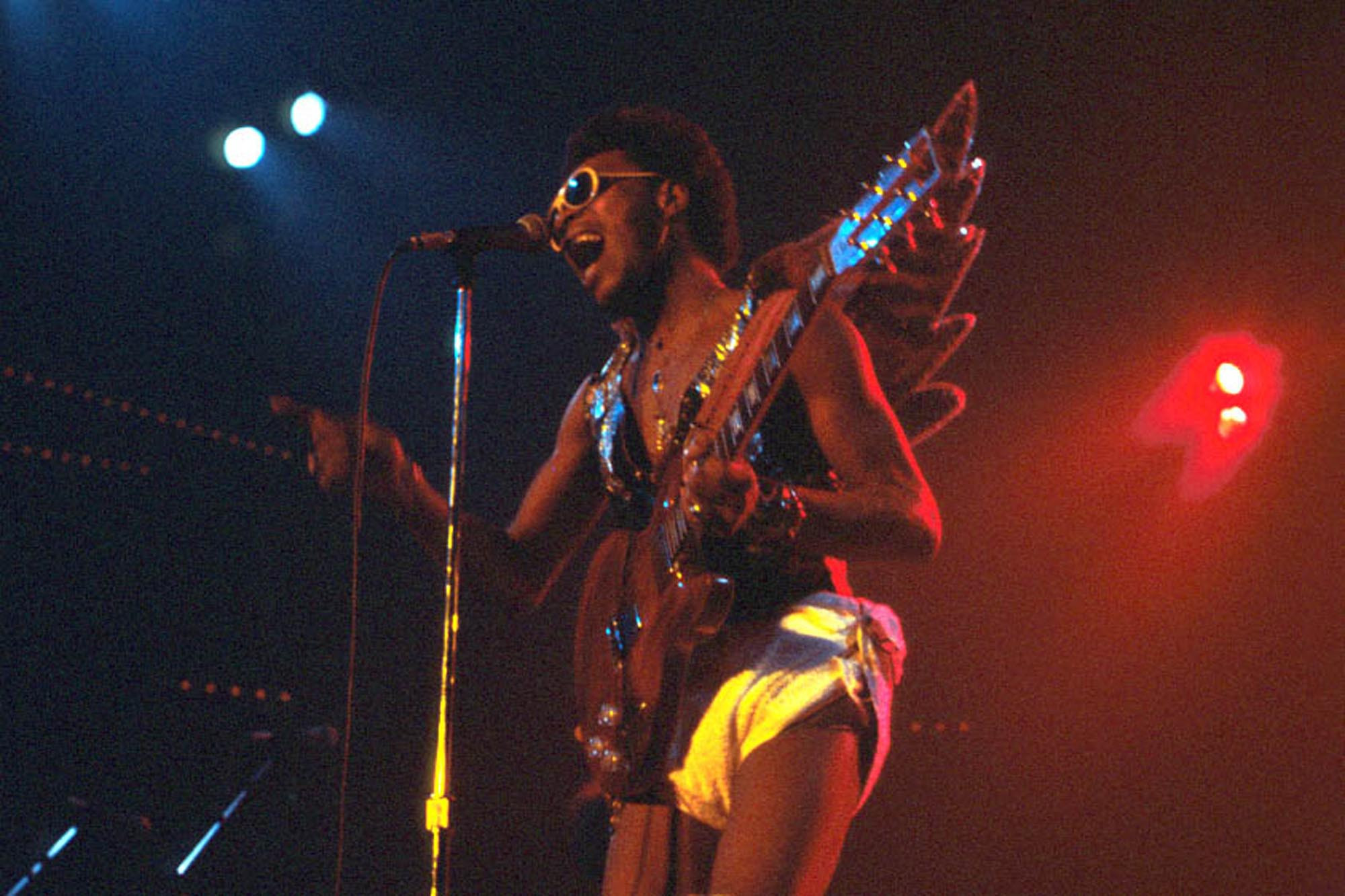 Garry "Diaper Man" Shider of Parliament performing live in 1977, funk rock guitar master
Garry "Diaper Man" Shider of Parliament performing live in 1977, funk rock guitar master
Image Credit: Michael Ochs Archives/Getty Images
Garry Shider of Parliament/Funkadelic, known as “Diaper Man” onstage, was a master guitarist. Celebrated for searing leads on “Cosmic Slop,” he was also a rhythm guitar master on “One Nation Under a Groove” and “Atomic Dog.” He co-wrote these hits and served as music director for P-Funk All Stars. His post-P-Funk work included collaborations with Paul Schaffer and the Black Crowes. Shider’s funk guitar mastery was central to Parliament-Funkadelic’s iconic sound.
Key Tracks: “Cosmic Slop,” “One Nation Under a Groove”
In conclusion, the world of rock guitar is incredibly diverse, encompassing a vast array of styles, techniques, and personalities. This expanded list of best rock guitar players showcases not only technical brilliance but also the innovative spirit and deep emotional connection these musicians forge with their instruments. From pioneers who shaped the very foundations of rock and roll to contemporary artists pushing the genre’s boundaries, each guitarist on this list has contributed uniquely to the ongoing evolution of rock guitar. Their legacies continue to inspire and influence generations of musicians, ensuring that the guitar remains at the heart of rock music for years to come.
